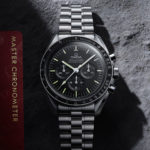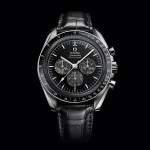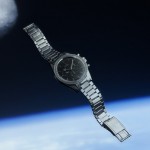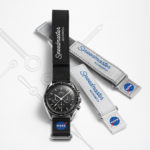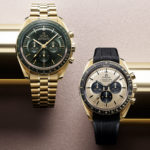In-Depth: The New Omega Speedmaster Professional Moonwatch Cal. 3861
A future-proof upgrade.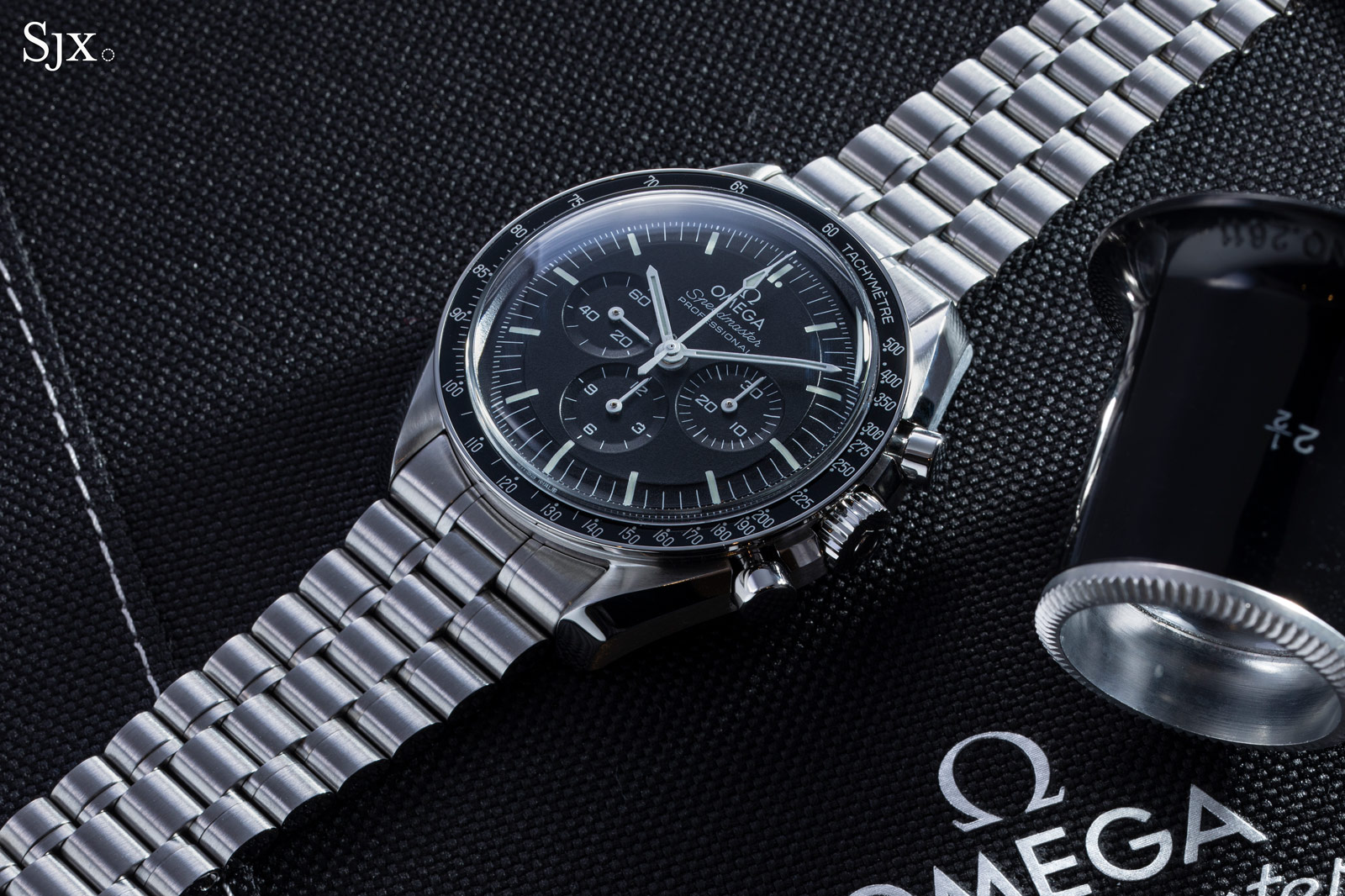
Having finally retired the decades-old version of the Speedmaster Professional Moonwatch powered by the cal. 1861, Omega announced its successor at the start of the year.
Equipped with the new cal. 3861, the Speedmaster Moonwatch Professional Co-Axial Master Chronometer Chronograph 42 mm is the result of a thorough makeover, with all its parts – from the case and bracelet to the dial and movement – reworked in nearly every respect.
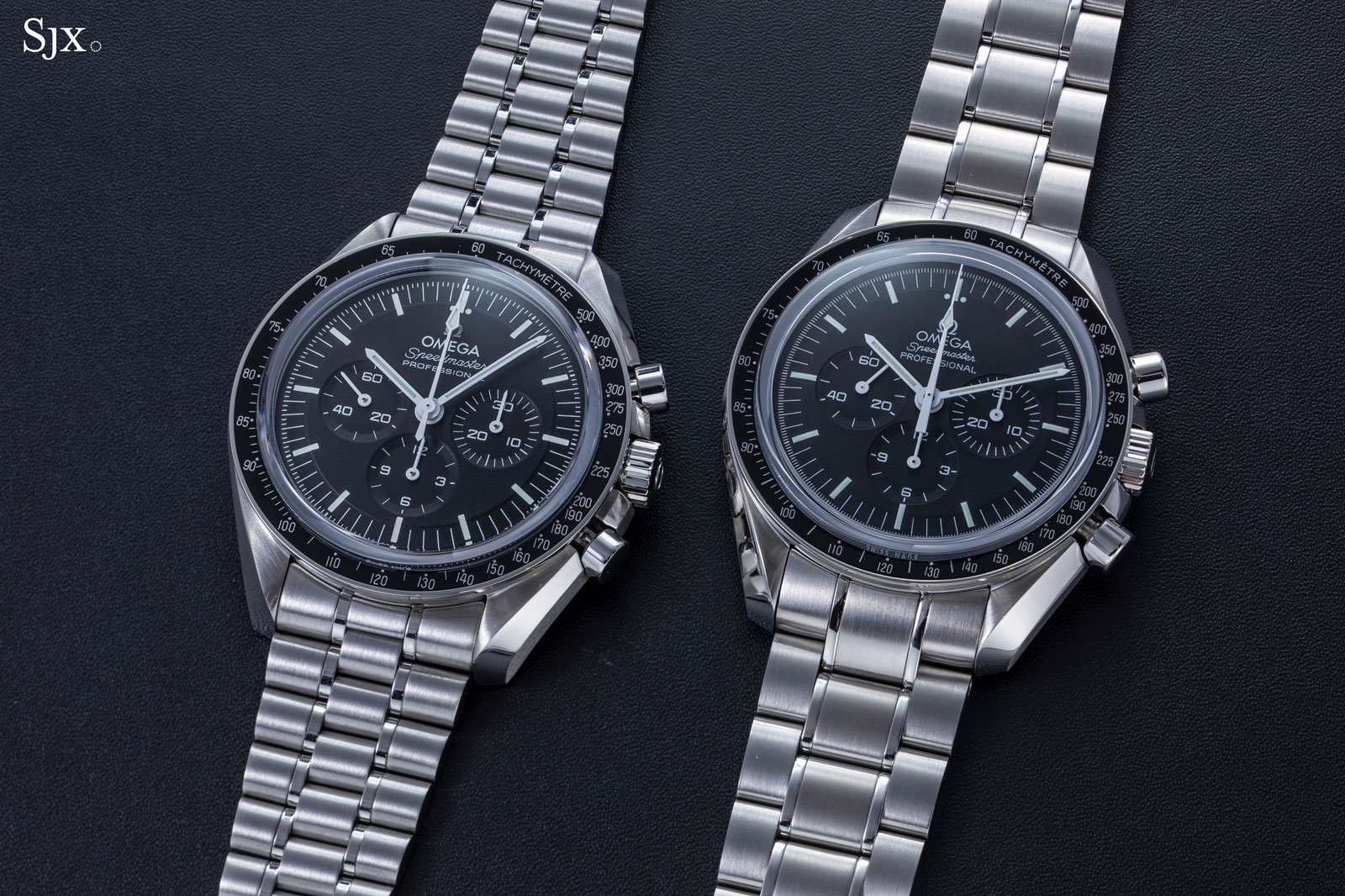
The latest version (left) and its predecessor
While that seems to imply a radical change, it’s near impossible to tell the new and old versions apart. Despite being all encompassing, the improvements are subtle. From an aesthetic perspective, the Moonwatch remains as it was in the mid 1960s, when the straight lugs of the earlier generations were replaced with the twisted, “lyre” lugs that are now a defining feature of the model.
That leads to the obvious question: if the two generations are nearly identical, is the new version any better?
Briefly put, yes. Two upgrades elevate the new Moonwatch in a tangible and substantial manner. One lies in the detail of its design: the face has a bit more flair thanks to greater distinction between the different levels of the dial.
And the other lies on the inside: the new cal. 3861 gets most of Omega’s state-of-the-art innovations, resulting in improved timekeeping, as well as a useful level of magnetism resistance.
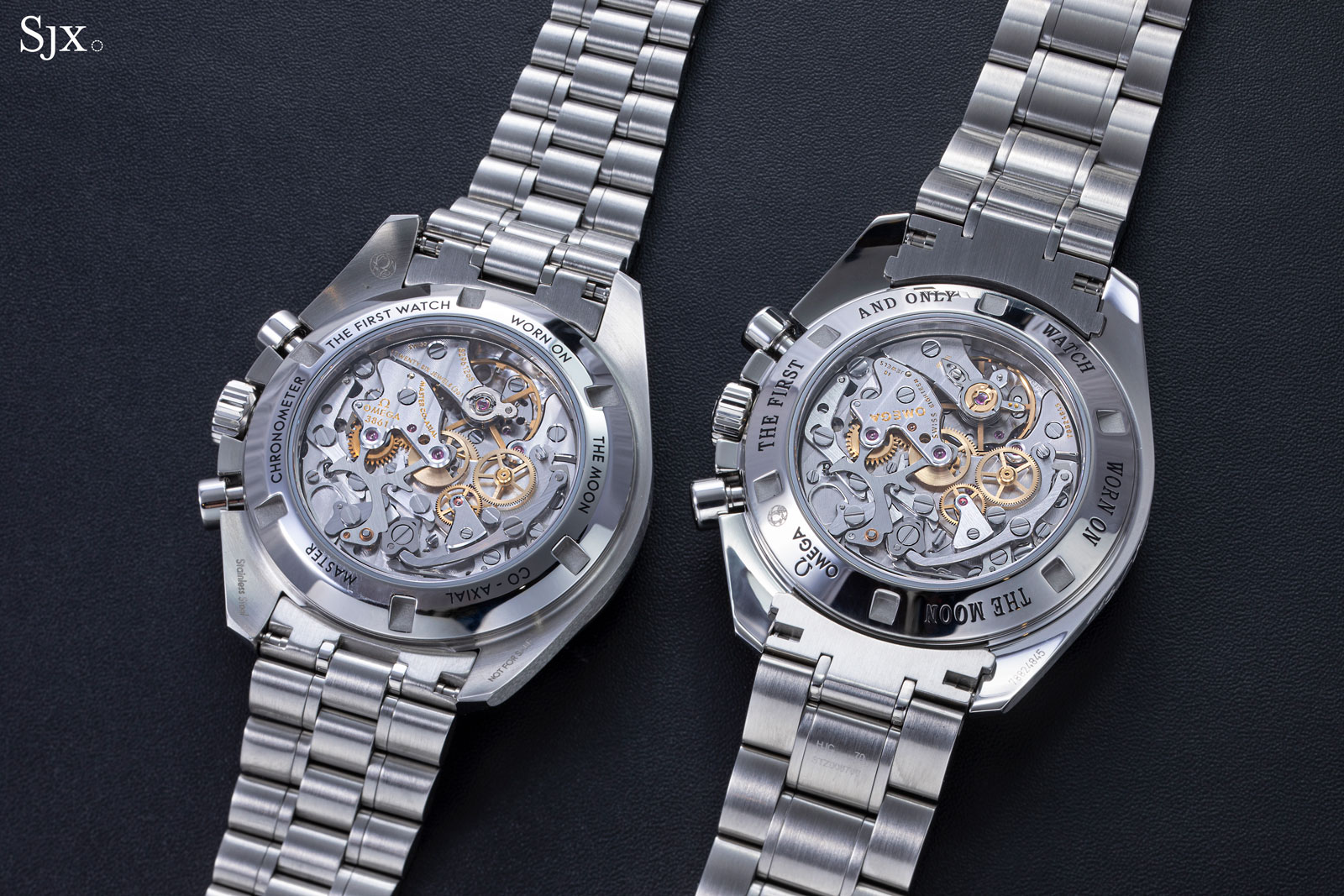
The new cal. 3861 (left) and the cal. 1863 (the dressed-up version of the cal. 1861)
Initial thoughts
Having gone along for the 1969 Moon landing, the Moonwatch has secured a firm place in watchmaking’s hall of legends. In recent decades, its tangible qualities began to lag behind its stellar reputation. Starting in the 1990s, the Moonwatch remained essentially unchanged, while rivals like the Daytona were continually upgraded.
A major makeover was long overdue. But with its identity so firmly established – the Moonwatch has to look like the Moonwatch – any changes had to be gentle. By that metric, the new Moonwatch is an accomplishment. It is everything a Moonwatch should look like, while being everything a modern-day, mid-range chronograph should be.
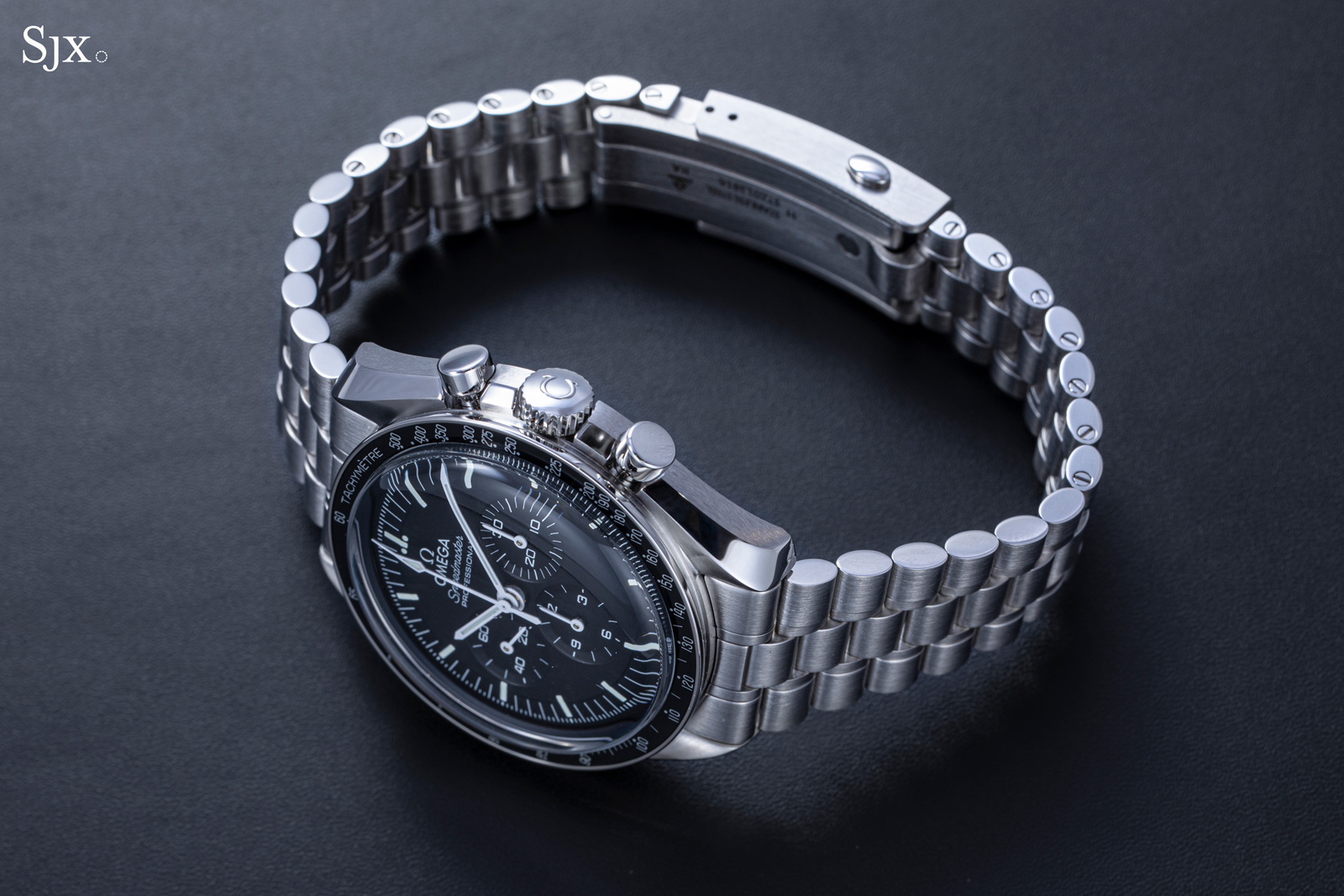
A pleasing, familiar sight
From an aesthetic standpoint, the tweaks are subtle but clearly catered to enthusiasts. Ironically, the overriding motif of the redesign is looking backwards – perhaps unsurprisingly given Omega’s predilection for vintage-inspired styling.
Omega lifted several details from vintage Speedmasters, making the occasionally clinical-looking design more attractive. The stepped dial, for instance, adds depth, and the vintage-inspired bracelet gives it a more casual feel.
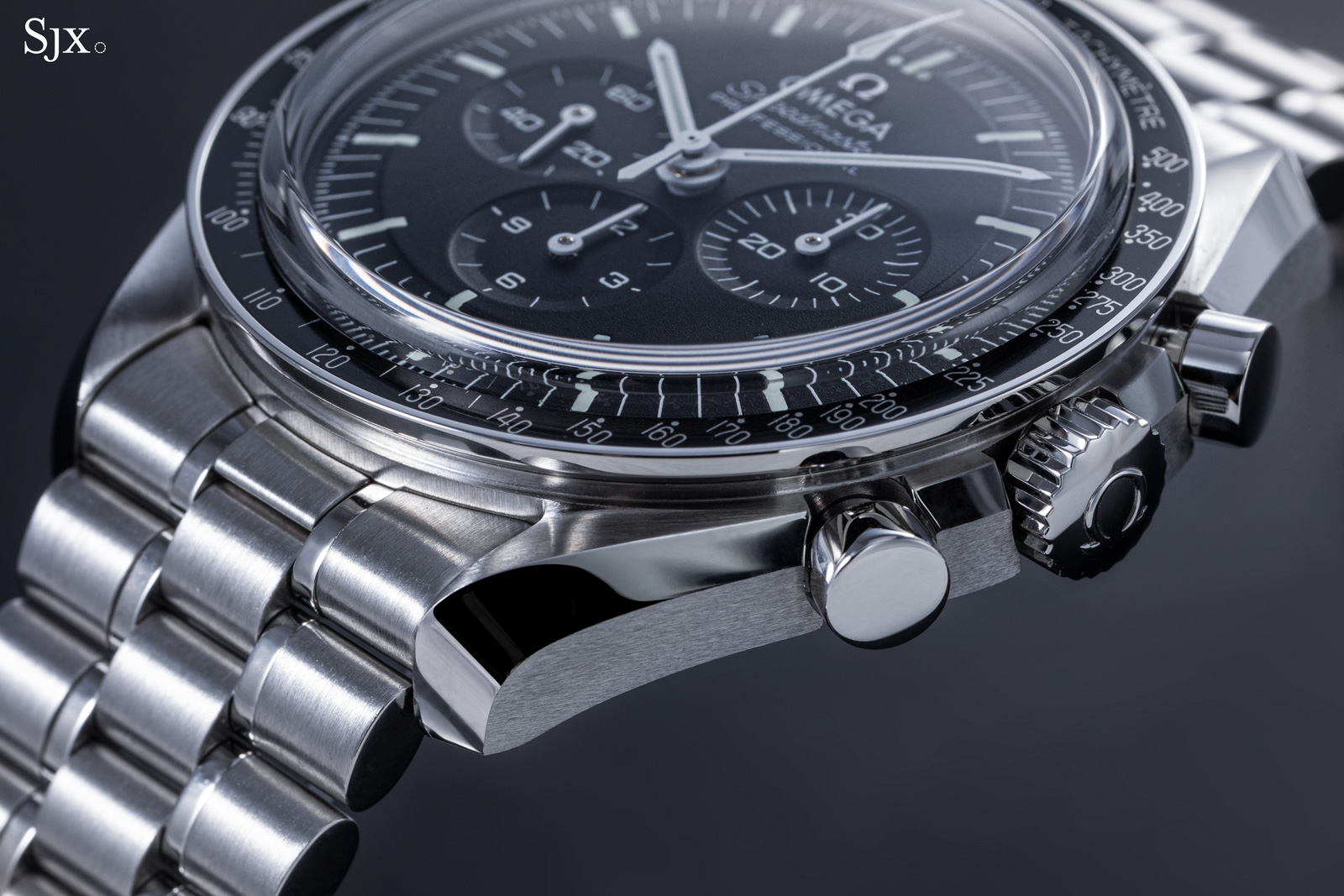
But the redesign is only part of the appeal. A more significant highlight is the movement, a classically-constructed, hand-wind chronograph, making it unusual among its counterparts, majority of which are automatic.
At the same time, the most substantive upgrades are found in the movement, with the cal. 3861 having all of the brand’s modern tech, making it the most accurate and most magnetism-resistant Moonwatch to date.
Add to that a hacking seconds – a prosaic function that is enormously useful – meaning no more more clumsy attempts to set the time by fiddling with the crown back and forth.
Also enhanced is the finishing. The progress in term of decoration is slight, but the overall treatment is more consistent than before. All visible parts, such as the bevels on the bridges and countersinks for screws and jewels, are now neatly machined.

The updates to the watch are undoubtedly for the better, but they come at a price.
As expected, the retail price of the new Moonwatch is higher than its predecessor across every variant. The price hike is arguably more than the improvements would justify – the new models are about 20% more expensive – and is perhaps more of an attempt to raise the average selling price of Omega’s trademark chronograph, which is significantly less than comparable chronographs from rival.
That said, Omega was starting from a low base with the retired Speedmaster Moonwatch. It was an unusually excellent value proposition – good enough that it had few rivals – which means that the new Moonwatch remains from being exorbitant. This helps cushion the price increase and leaves the new versions still competitively priced.
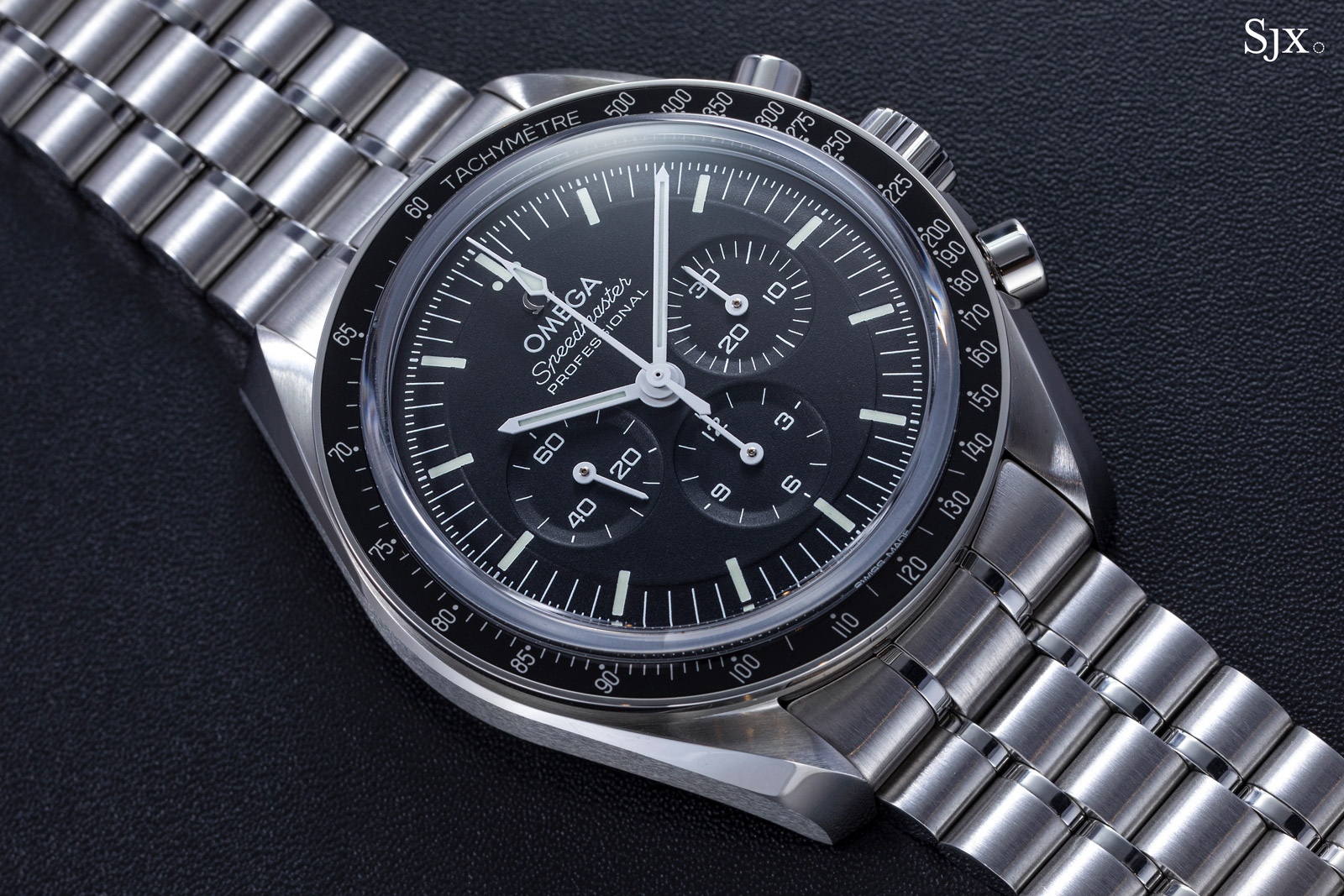
A crash course on the lunar timekeeper
Before going into the details of the new Moonwatch, it’s useful to understand how it all started, especially the key historical changes that relate to features of the latest generation.
The Speedmaster’s association with NASA and Apollo 11 Moon landing has been well documented, so I will go over the model’s evolution instead. The Speedmaster debuted in 1957 as the ref. 2915, but the model only gained the “Professional” label on the dial a decade later, after it became standard issue for American astronauts.
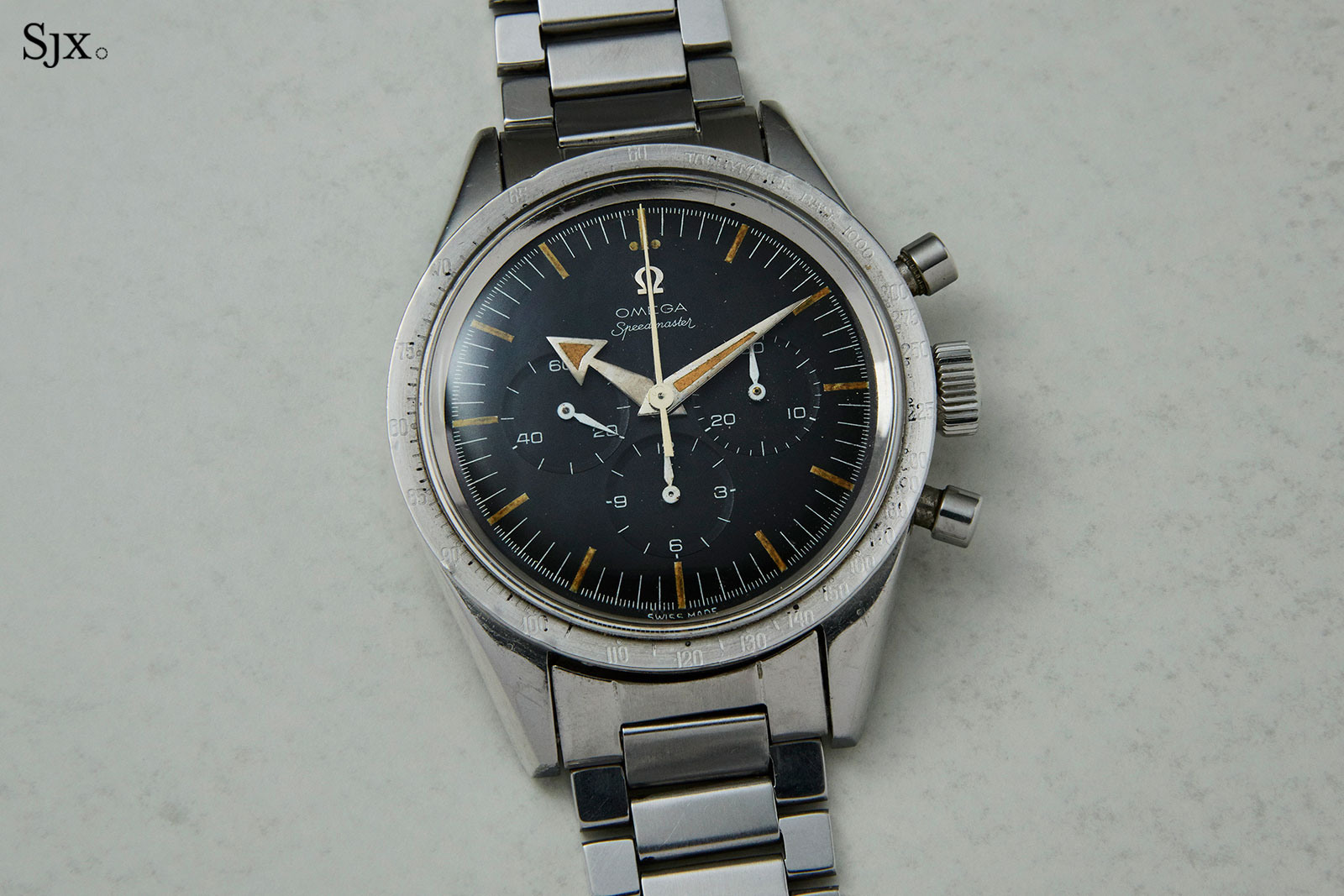
A well-worn example of the ref. 2915-2 from 1958
Over the following decades, the Speedmaster evolved into the form we are familiar with today, specifically with the ref. 105.012 of 1963, which provided the template for all subsequent Speedmaster Professionals. Although the look remained largely unchanged, the dial grew simpler over time, losing details such as the stepped flange intersecting the hour markers and concentric graining on the sub-dials (which mostly appear smooth on later models).
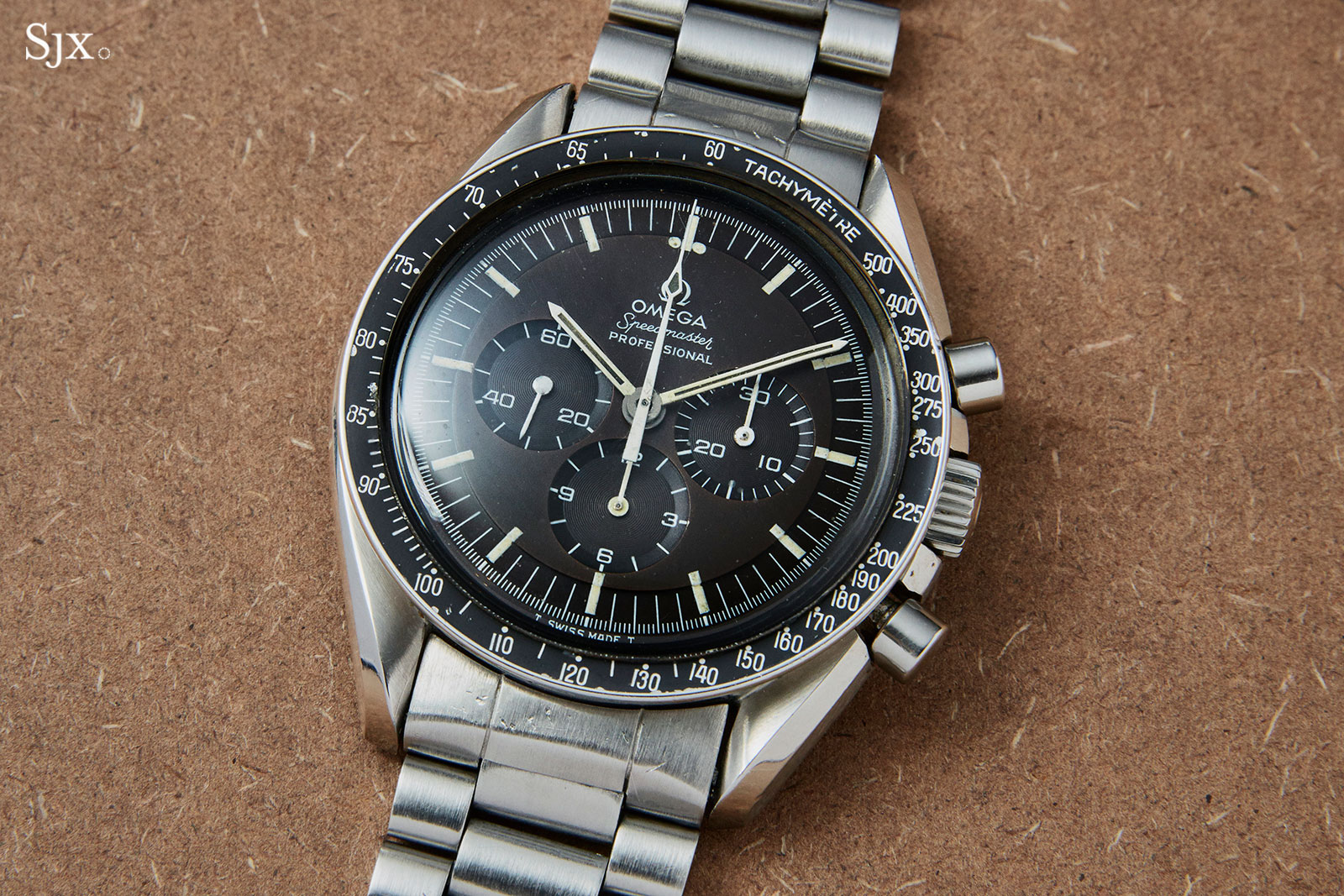
A ref. 145.022
More substantial was the change in the movement, which underwent a simplification of its construction. The movement went from the cal. 321 to cal. 861 (starting with the ref. 145.022 of 1968) and then to the cal. 1861. That meant features like the column wheel, free-sprung balance, and overcoil hairspring were replaced by simpler substitutes.
And sometime in the early 1970s, the cal. 1861 received a blocking lever of Delrin, a hard-wearing plastic, replacing the original of steel. This was later replaced with a steel lever once the Moonwatch got a display back in 1996 when the model branched into two distinctive but parallel configurations.
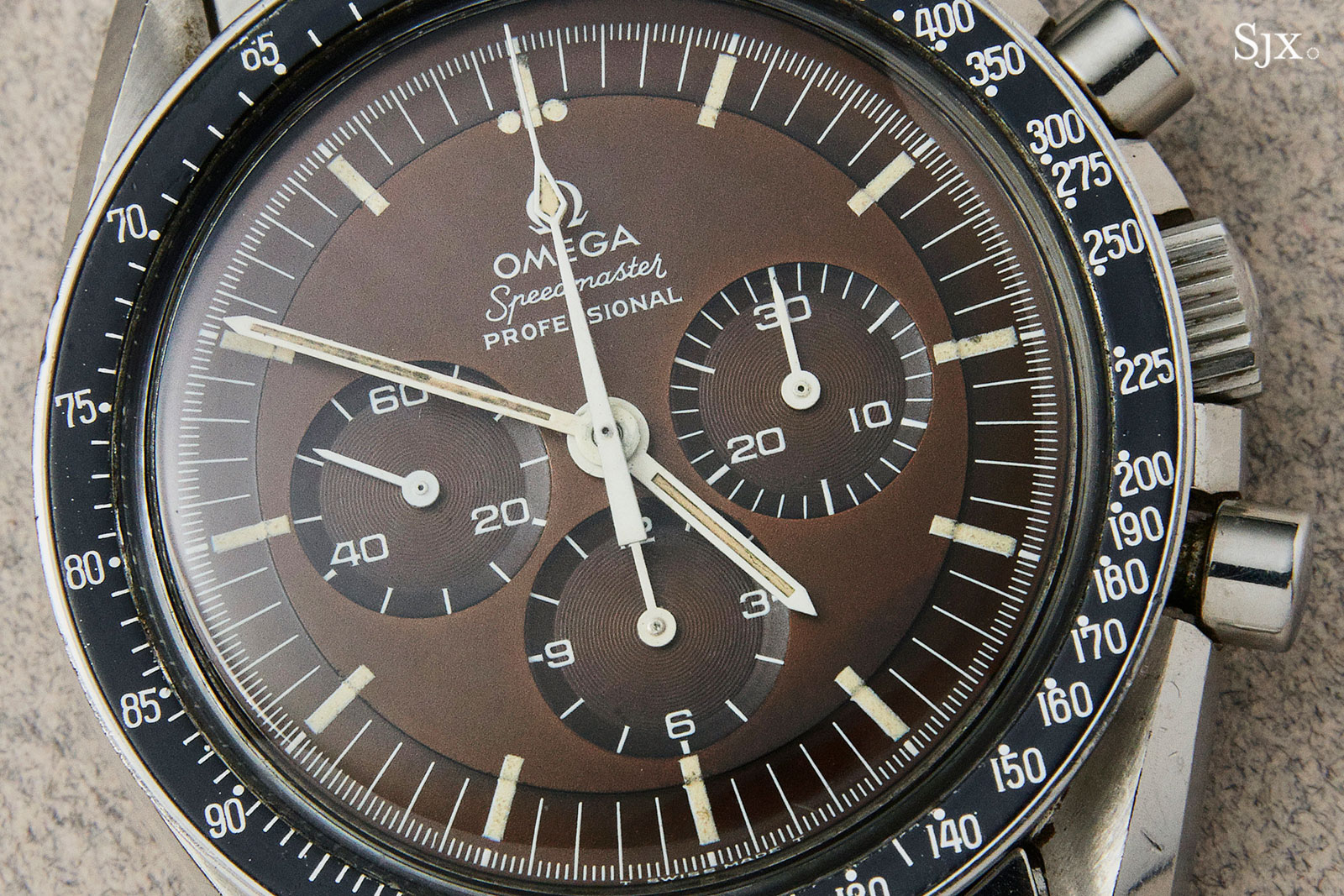
A vintage ref. 145.022 with a “stepped” dial along with prominent concentric stamping on the sub-dials
One configuration was the entry-level model that stayed true to the vintage original with a Hesalite crystal and closed case back hiding a plainly-finished cal. 1861.
The other was decidedly fancier model with an open back revealing the decorated cal. 1863. The fancier model was soon after replaced by a near-identical version with sapphire crystals on both the front and back, leading to the nickname “sapphire sandwich”.
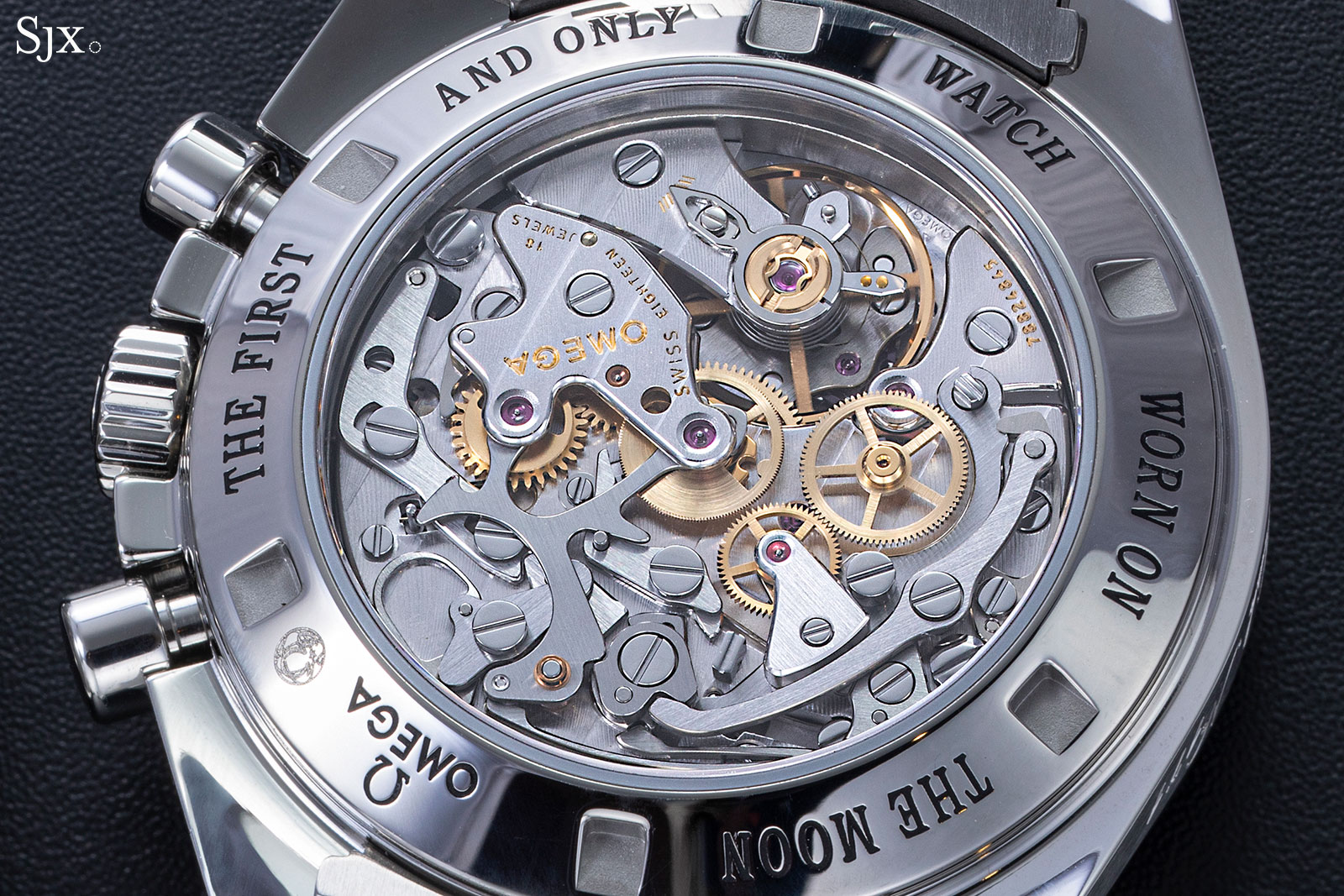
The cal. 1863 in the “sapphire sandwich”
The parallel versions of the Moonwatch continue with the latest generation, which is once again available with either a solid back or see-through, sapphire back. Both, however, have the same cal. 3861 that’s finished well enough to make a fancy version moot.
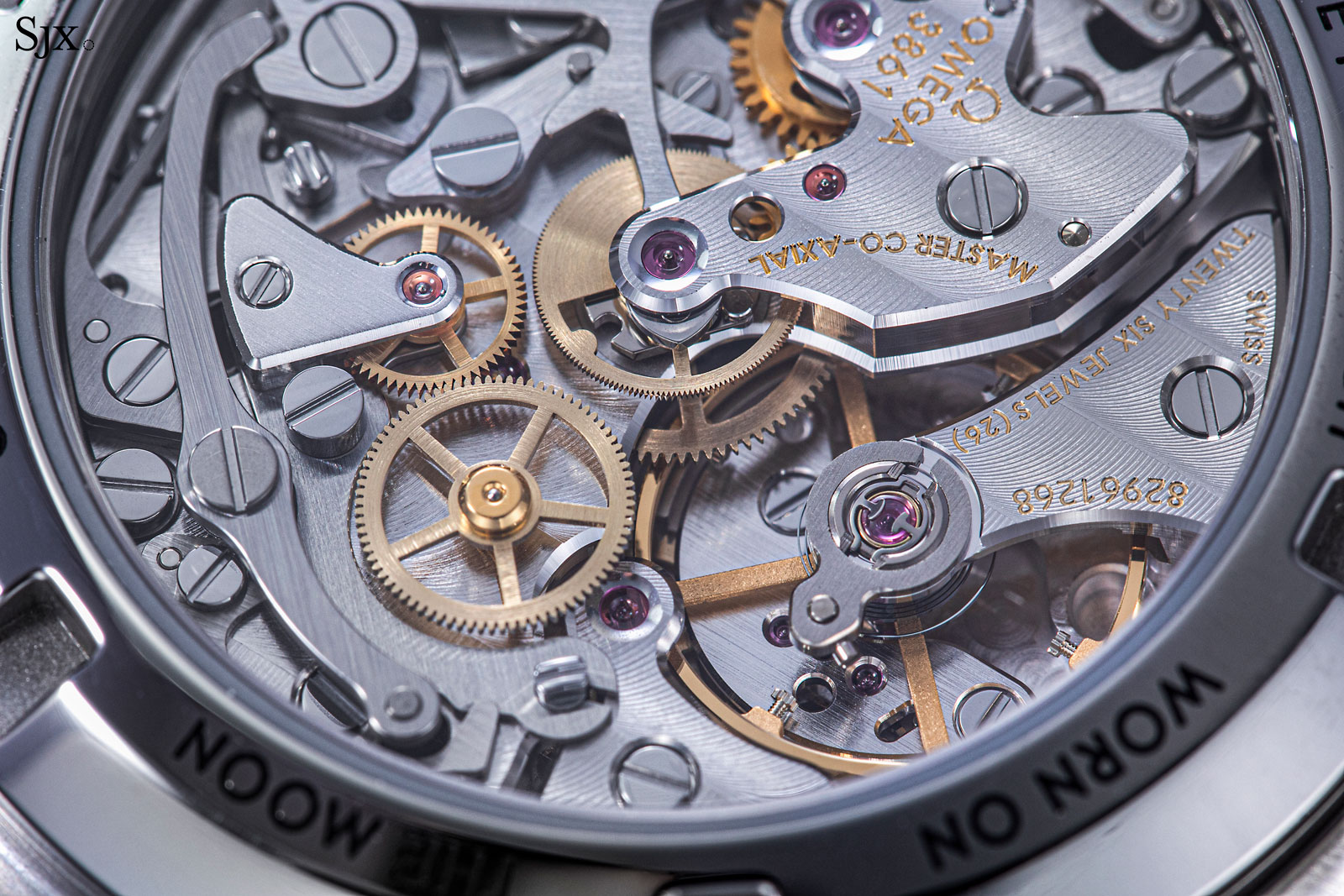
The cal. 3861 found in both versions – sapphire and solid-back
Fine tuning a classic
Many of the attractive details that defined vintage Speedmasters make a return on the latest Moonwatch. Though small, these elements make the whole greater than the sum of its parts, enhancing the new Moonwatch and giving it a more upscale feel.
Most of the crucial design changes are found on the dial. First is the “stepped” construction, meaning the chapter ring is recessed against the central portion that contains the counters – adding dimensionality to the dial. Another subtlety is the finishing: the central boss of the hands on the registers are polished instead of painted white, which creates contrast and a tiny, shiny point.
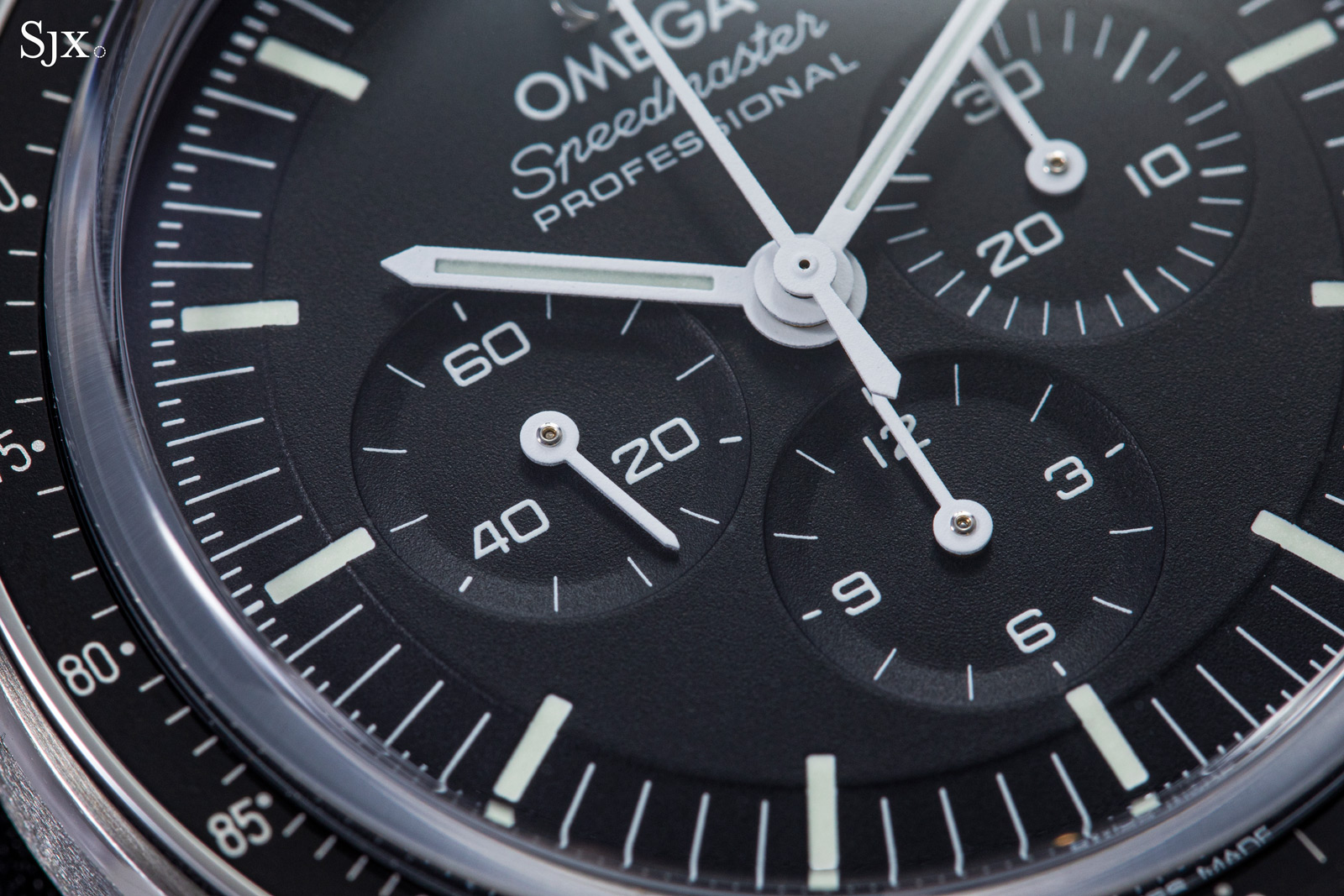
The new dial is more three-dimensional thanks to the stepped chapter ring
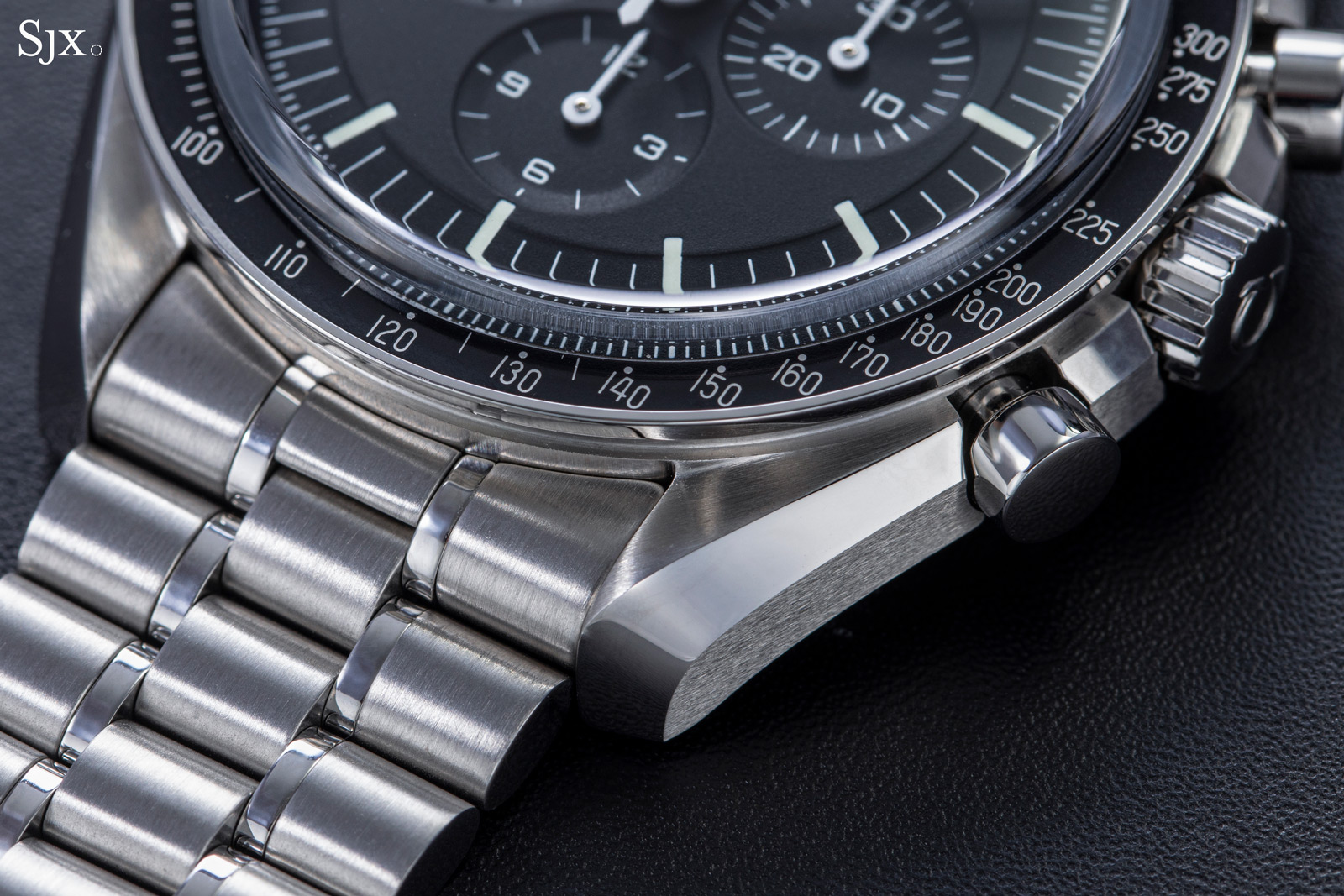
The edges between brushed and polished surfaces are well-defined
And then there’s a detail that separates the sapphire and Hesalite versions. The Omega logo at 12 o’clock is printed on the Hesalite version, as it is for the outgoing model. However, the sapphire model has an applied logo, evoking vintage Speedmasters, making for a simple but pleasing distinction between the two variants.
Most importantly, the functionality of the chronograph has been perfected.
The sub-second divisions for the central seconds are now correctly graduated for the movement. In the outgoing model, the seconds track has five divisions per second, which does not match the 3 Hz (21,600 beats per hour) of the cal. 1861/1863. The dial on the new Speedmaster has a track graduated with three divisions per second, which tallies with the 3 Hz of the cal. 3861.
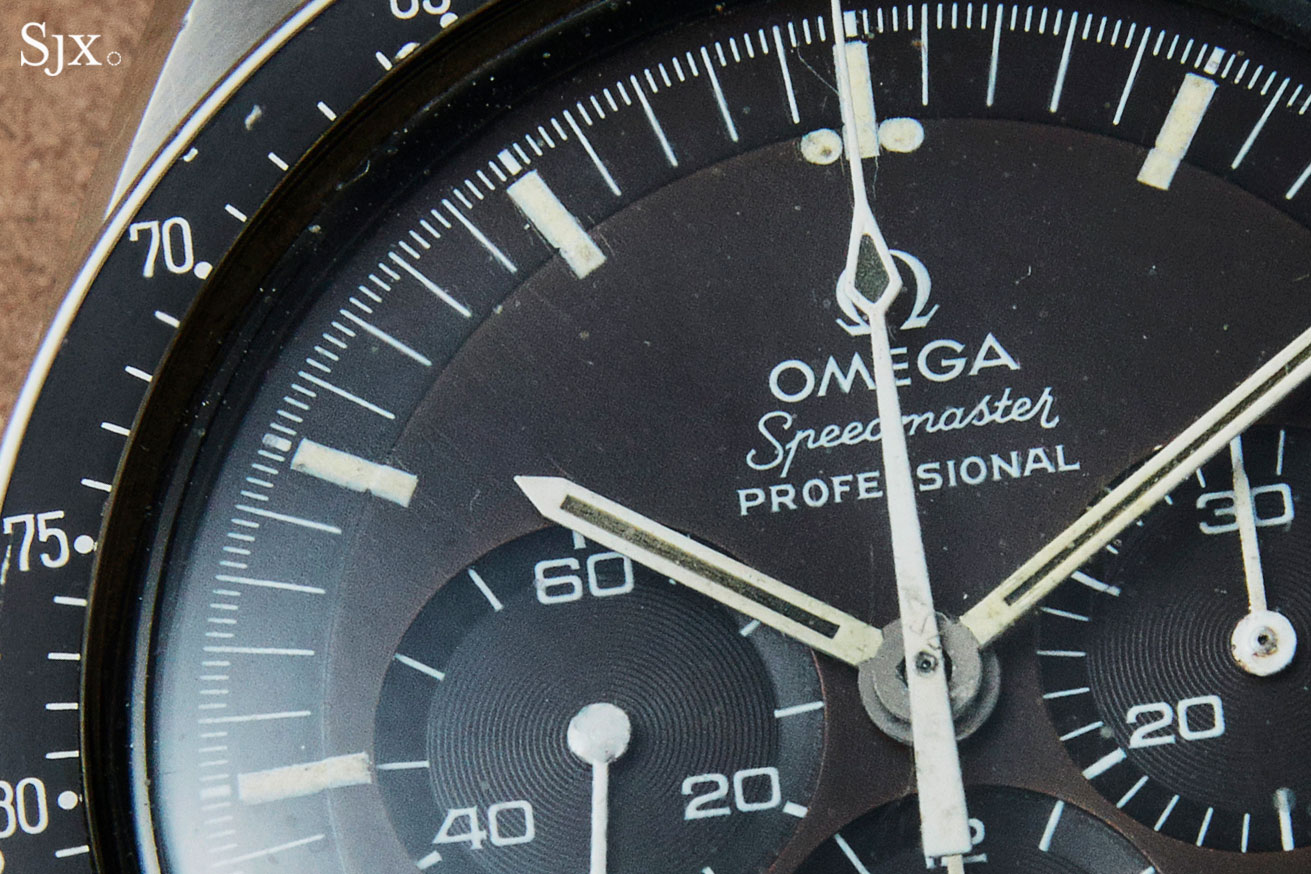
The five-hash mark seconds scale on a ref. 145.022, a mismatch for the beat rate of the cal. 861 inside
As an aside, the reason for the mismatched scale on the previous-generation Moonwatch is historical. The earliest Speedmasters was equipped with the cal. 321, which ran at 2.5 Hz, making five divisions per second correct.
As we outlined above, the cal. 321 was later replaced by the cal. 861 and its variants. Although the movement was replaced, the dial remained largely unchanged, perhaps in an effort to retain the lunar halo of the original. With the new Moonwatch conceived as an evolution of the original, as opposed to a remake, its designers clearly had the liberty to afford these subtle modifications.
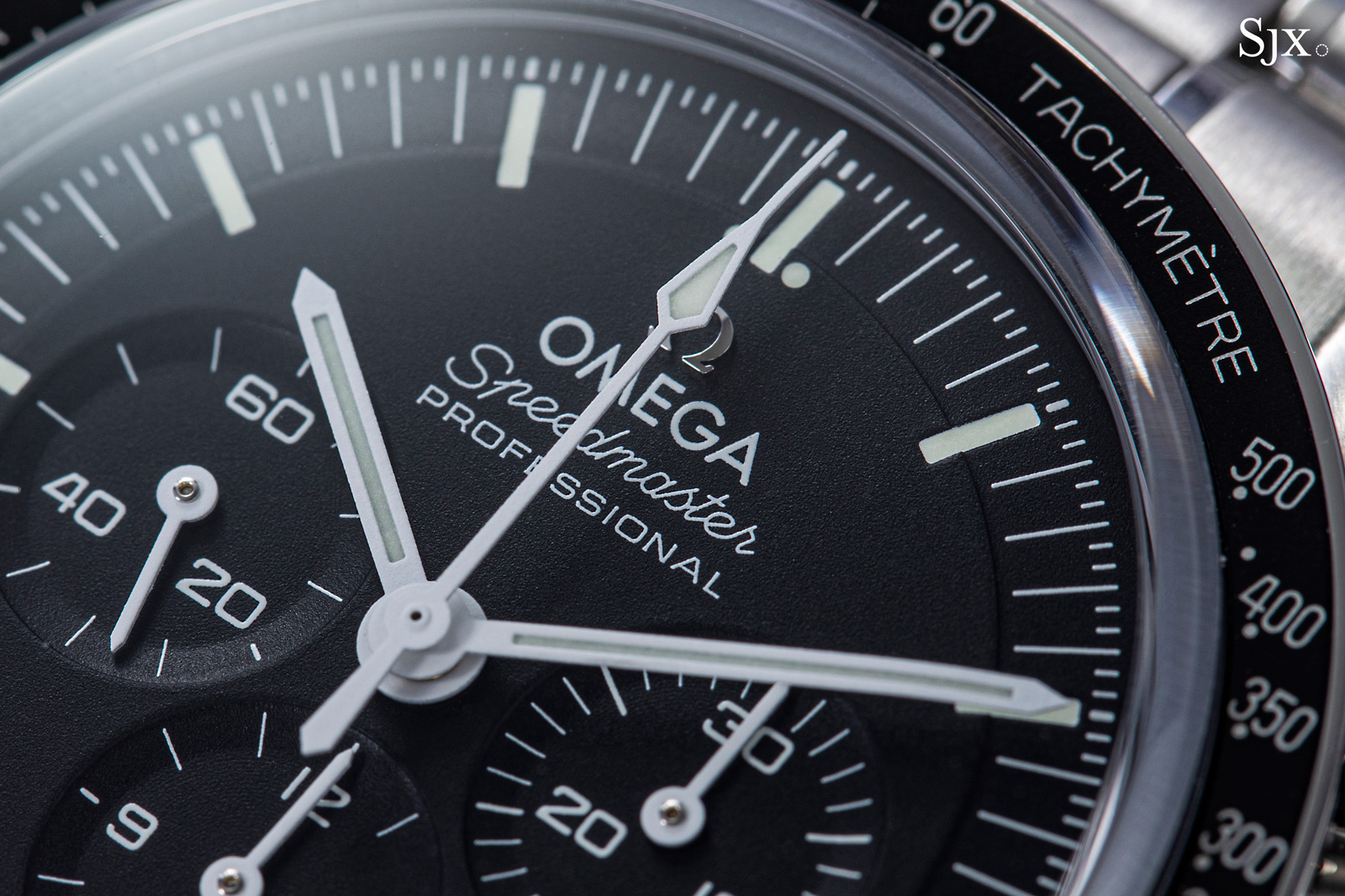
The sapphire version gets an applied logo, an improvement over the outgoing model
Next is the bracelet, which also gets the vintage treatment. Being composed of more parts per link, the new bracelet is more intricate, while also having smaller and more tapered links. That means the bracelet is more flexible, making for better comfort on wrist, while allowing for better, more precise sizing.
Also, it looks more refined, since the earlier generation bracelet was relatively chunky, something that is most apparent when comparing the two side-by-side.
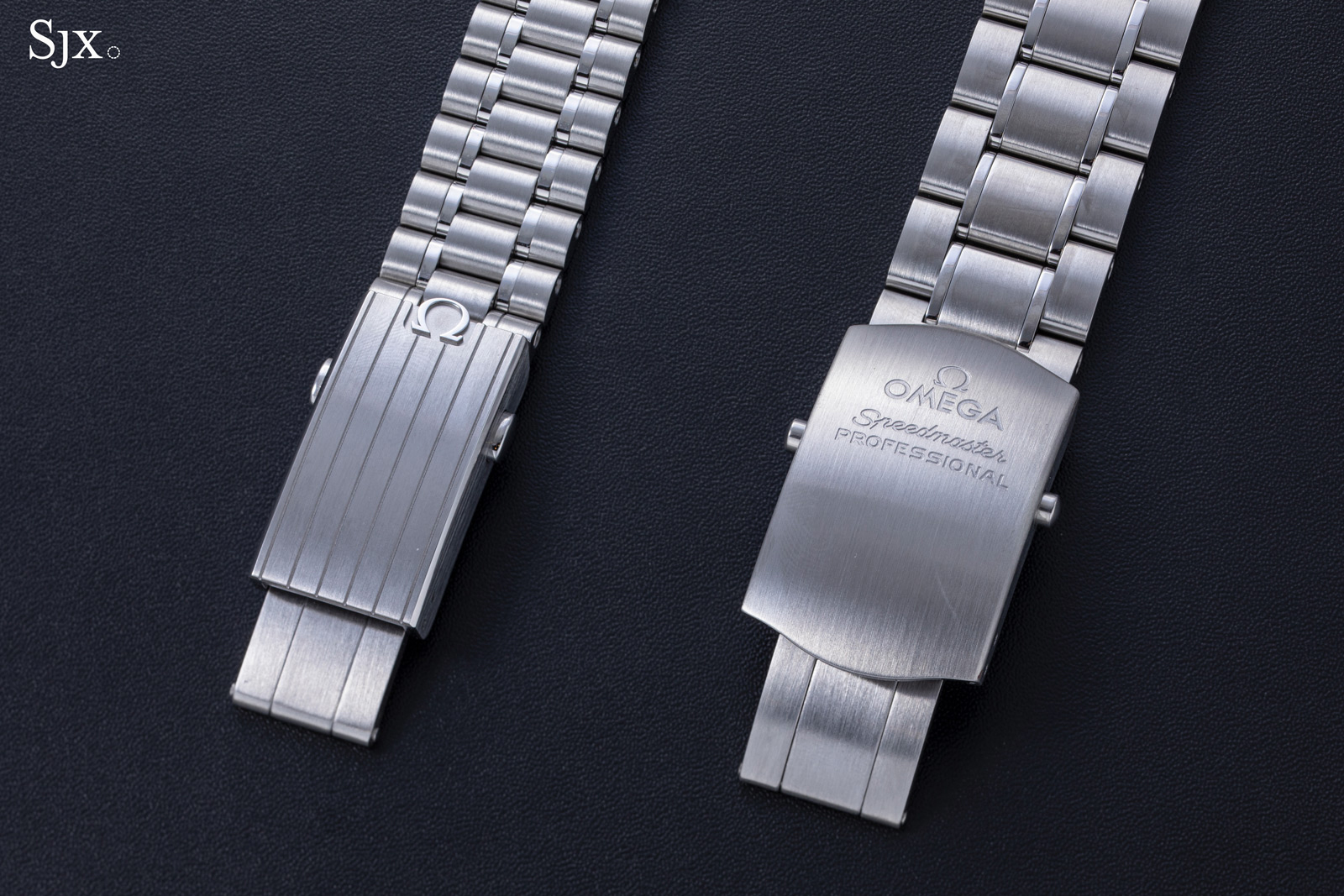
Clasps new (left) and old
Though reduced in width and length, the new clasp is solidly constructed, giving it an impressive heft, with reassuringly large, polished pushers for its release. An Omega logo in relief sits at its top, replacing the simpler, machined-engraved logo on the previous-generation bracelet.
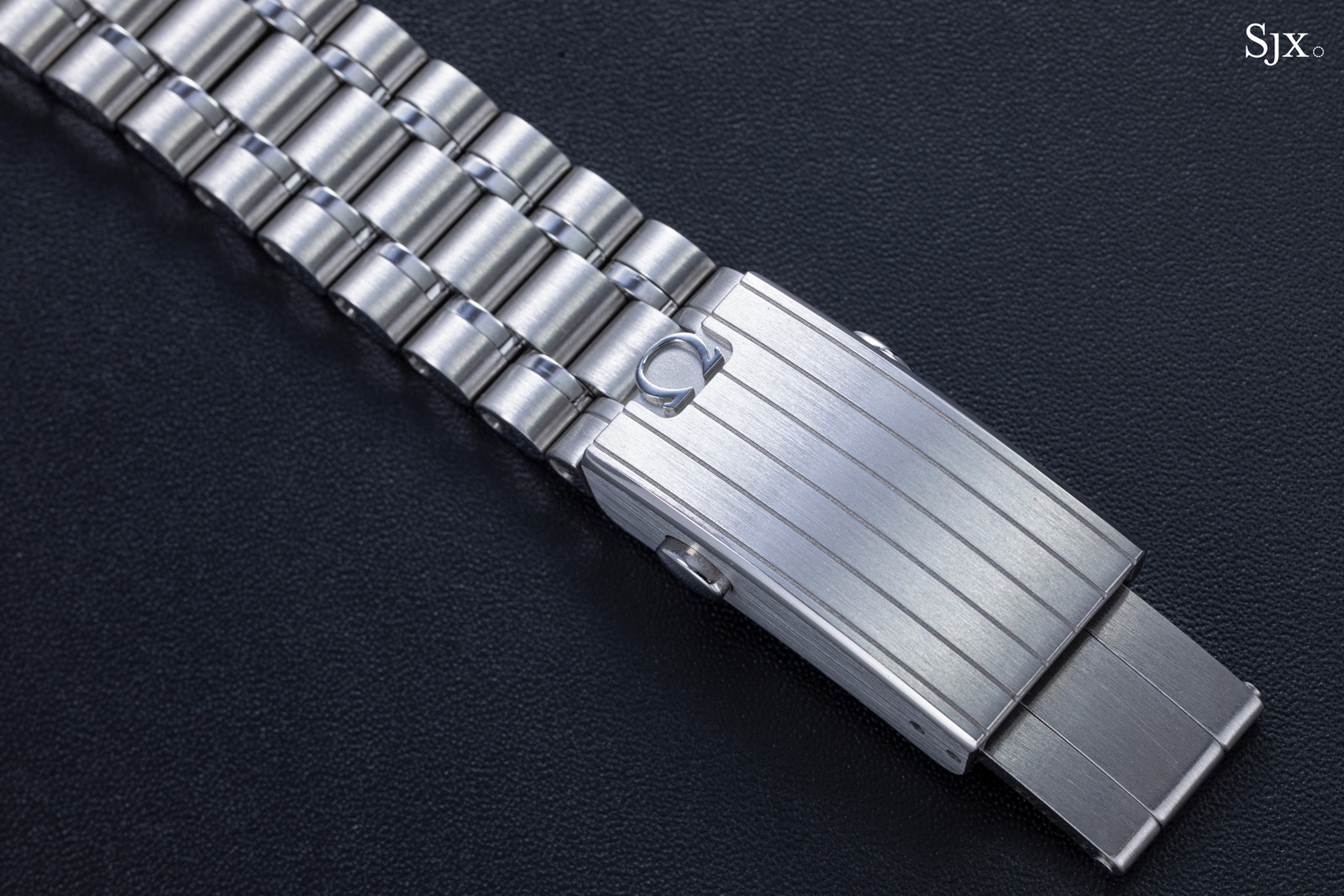
The new clasp is more nuanced, getting a relief Omega logo as well as a pair of more refined pushers
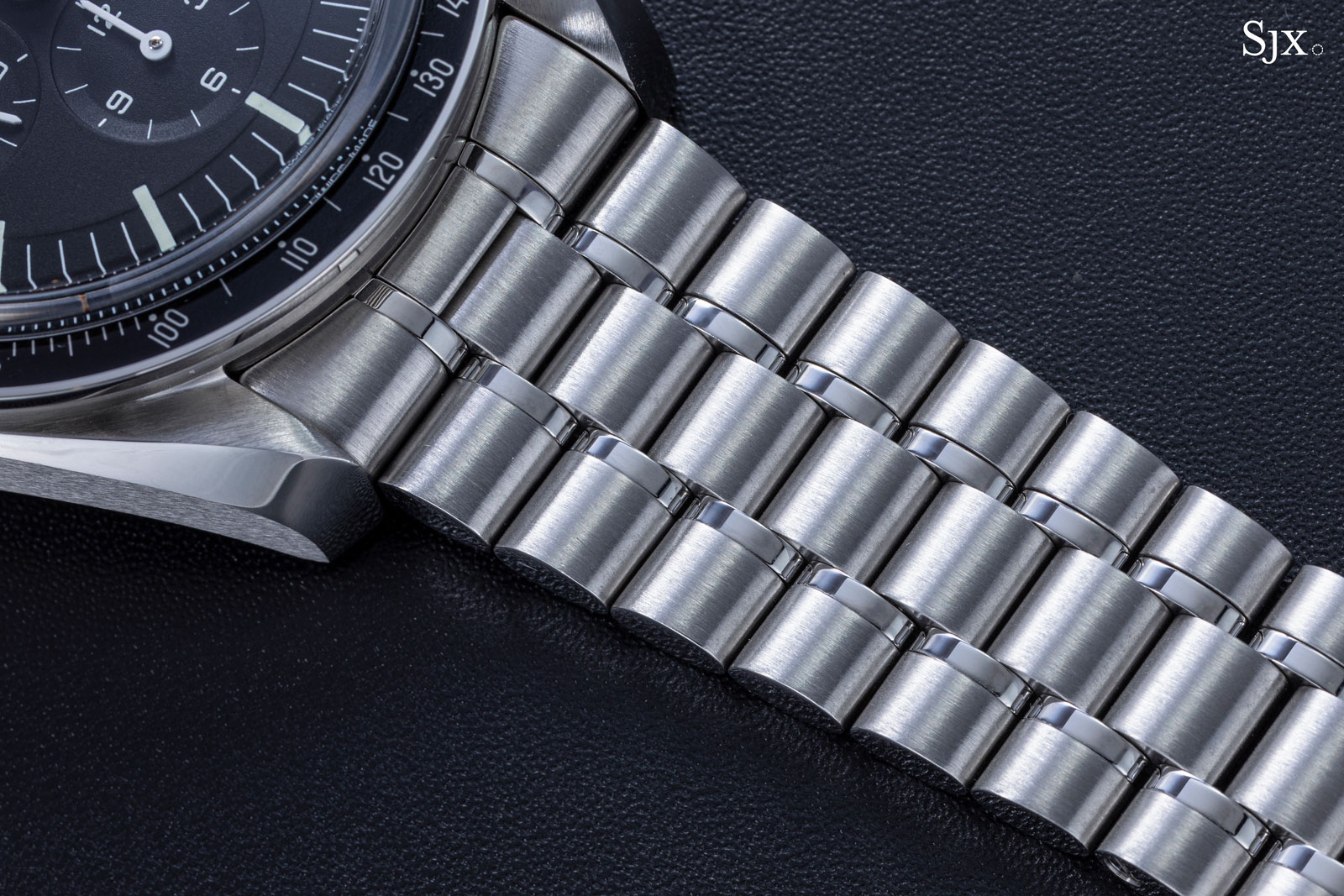
Again a subtle distinction between the sapphire-crystal version and its Hesalite counterpart: the former gets contrasting, polished middle links, while the latter has fully-brushed links
The subtle refinements continue with the case. It’s been slightly thinned, with the new Moonwatch measuring just 13.18 mm high with a sapphire crystal and slightly more in Hesalite at 13.58 mm. That compares with about 14 mm for earlier generations of the Moonwatch. Although the difference is substantial by the numbers, it is barely apparently in real life.
What is clear is that the primary improvement in terms of the case lies in its finishing. While the dial remains the classic, fuss-free look, the case is more expressive. Both the bezel and case flanks have several facets that are finished in contrasting brushing and polishing, adding flair to the watch.
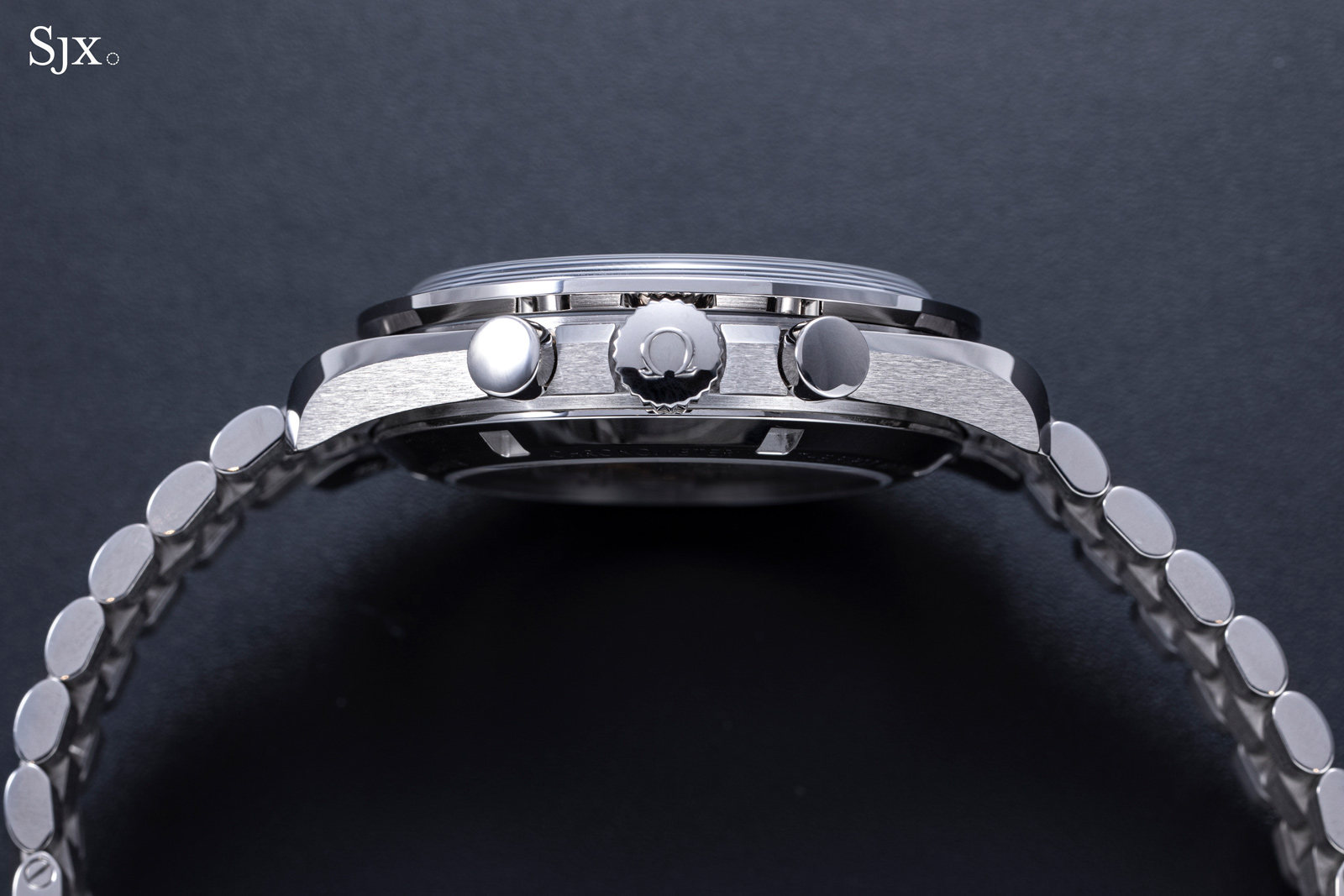
The new Moonwatch in profile
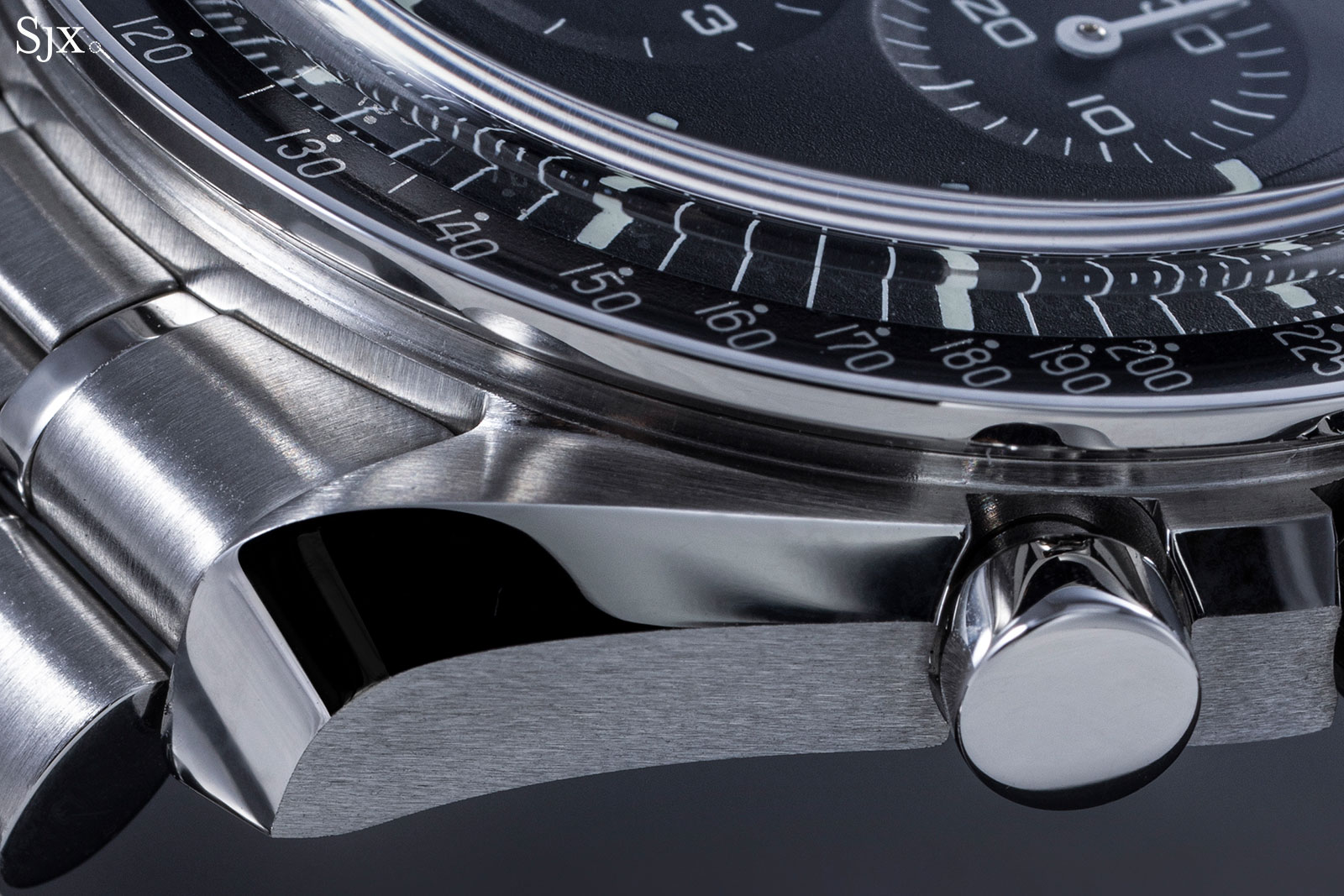
A less obvious, but telling aspect of the case upgrade is the back. Specifically, the back of the lugs. The outgoing generation had a simple, polished finish with some surface distortion visible, a result of the stamping process that creates the case form.
On the latest Moonwatch, however, a neat, brushed finish creates a clean, smooth surface. Though minor, this speaks to the thoroughness of the revamp.
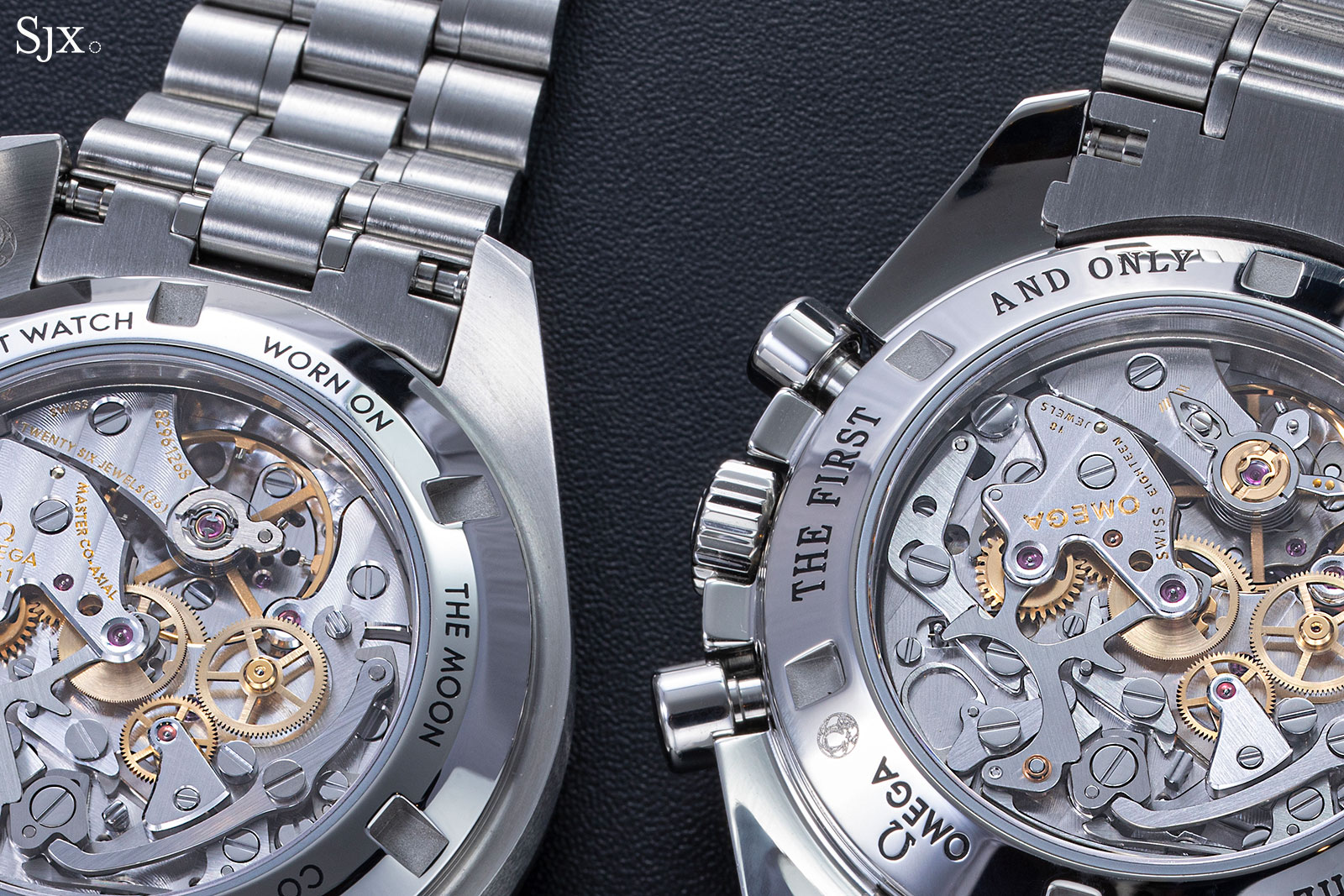
The differing finishes on the backs of the lugs
Despite everything, the new Moonwatch is priced as a mid-range sports chronograph. Its fit and finish, while improved, remains that of a mid-range watch.
The dial, for instance, is a little rough around the edges, especially around the luminescent hour markers. And the concentric graining, or azurage, on the sub-dials is shallow and less defined than on competitors in this price segment, such as the IWC Portugieser Chronograph, giving the surface finish of the registers an imprecise feel.
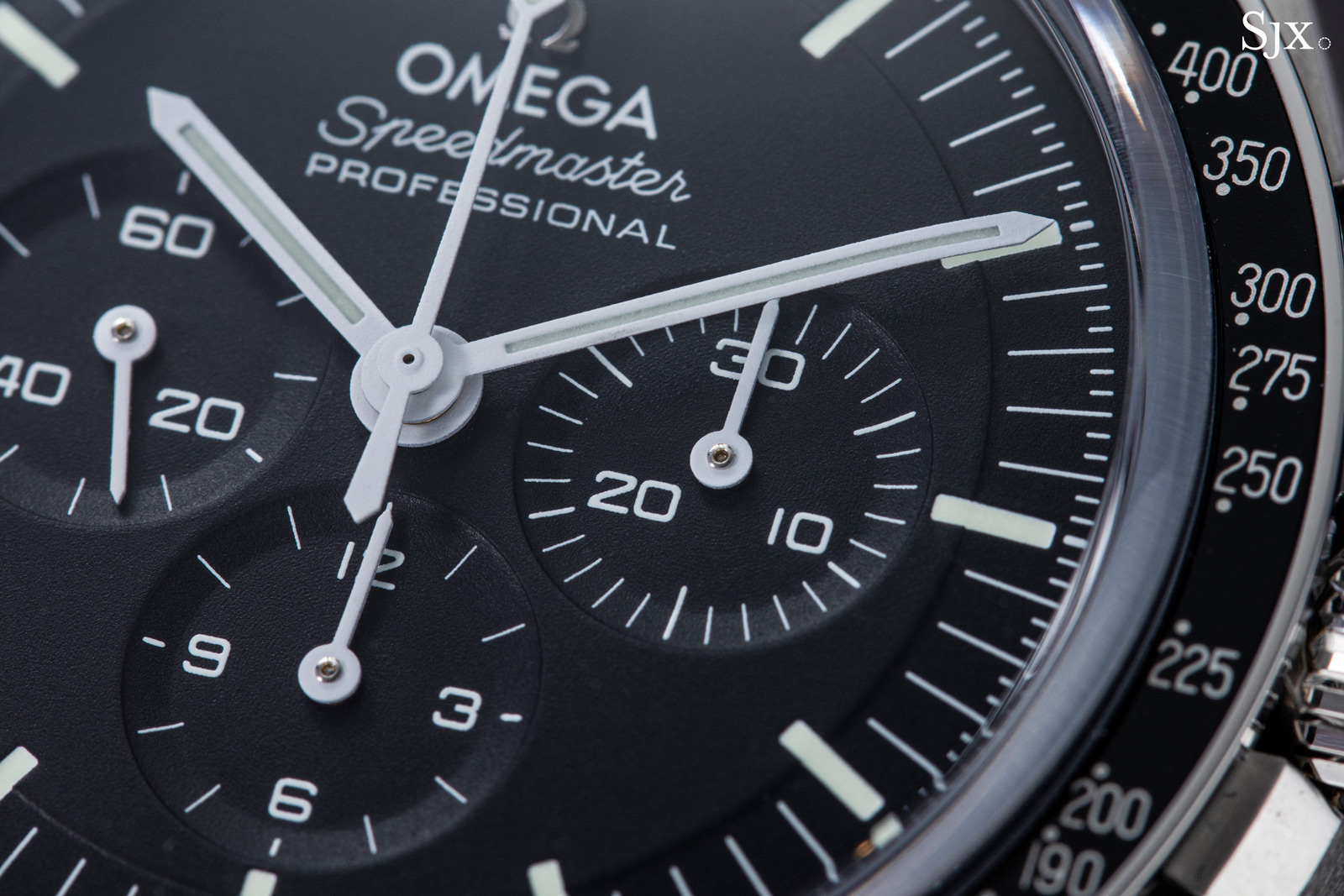
All of that, however, only holds true for the steel version. The solid-gold versions are priced like luxury watches and look the part. The Moonwatch in Canopus gold, the brand’s label for its white gold alloy, gets an enhanced dial that’s radially brushed and finished with applied markers of solid gold. The Moonwatch in Sedna gold, Omega’s proprietary rose gold alloy, is similarly upgraded – and similarly expensive.
Luxurious yet understated, the Canopus gold model is the most attractive – and unusual – of the latest-generation Moonwatch. But at seven times the price of the steel model, the white-gold version is far from a value proposition.
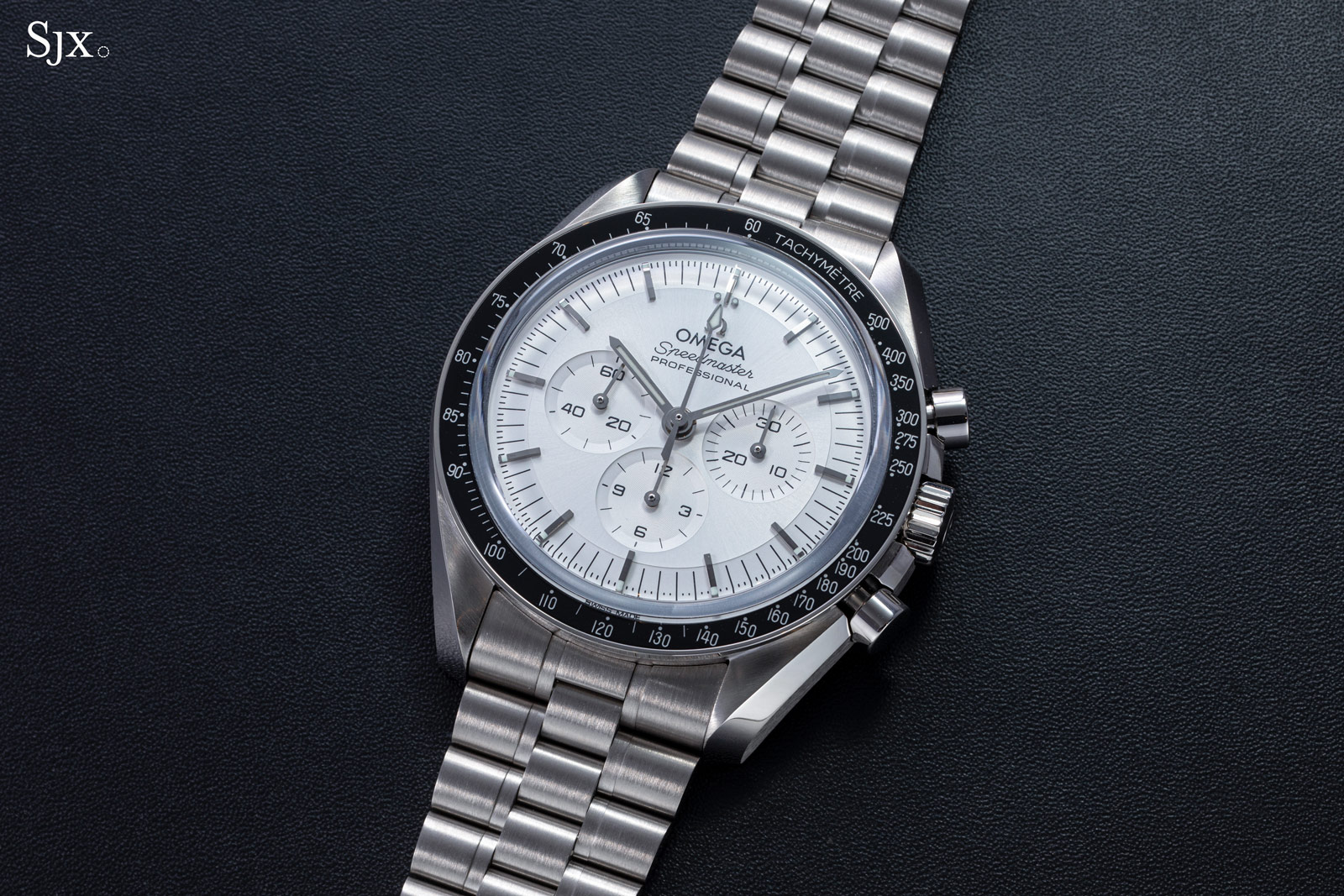
The ultra-luxe Moonwatch in Canopus gold
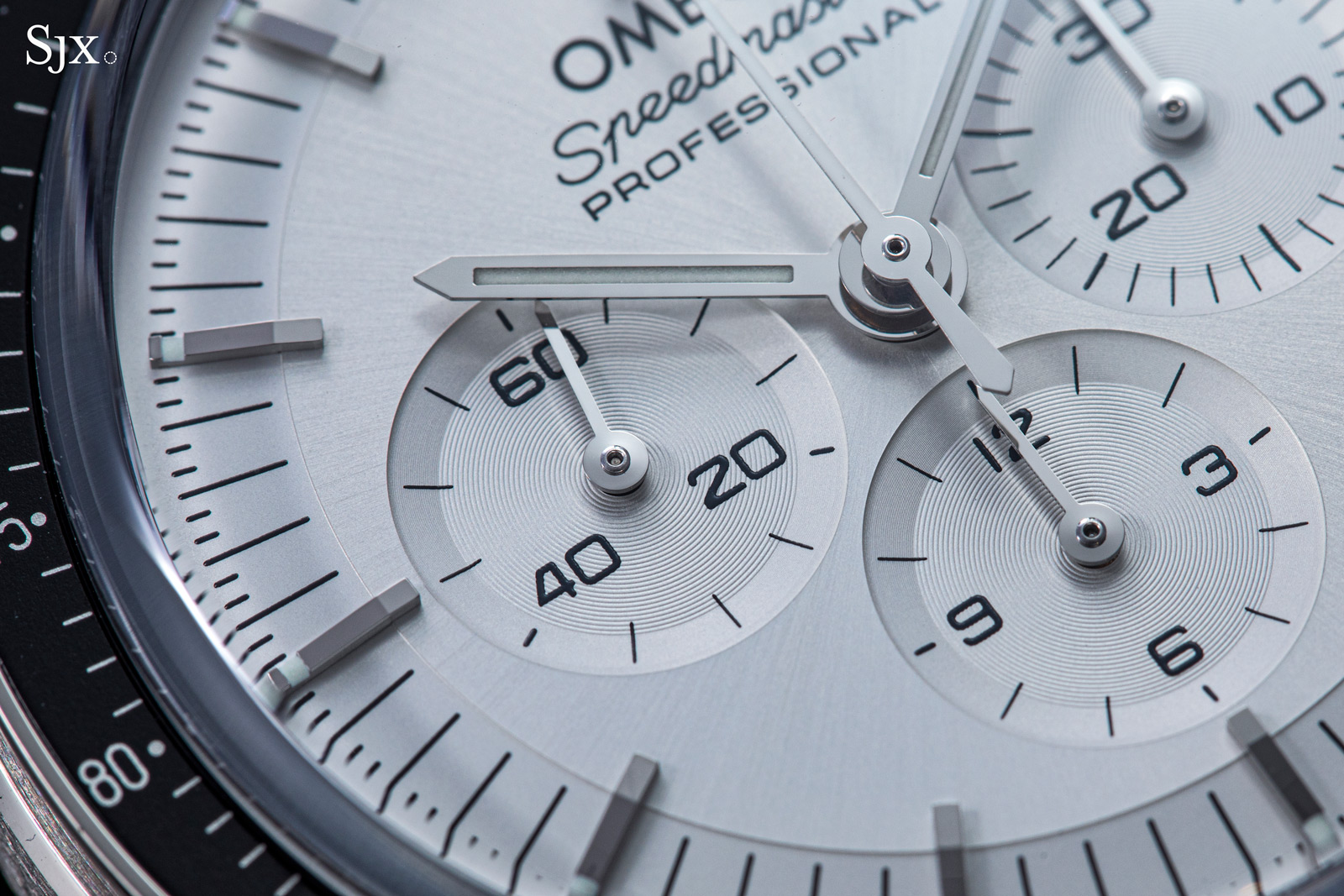
The borders and concentric pattern of the sub-dials are more defined on the Canopus gold model
Better timekeeping
The cal. 3861 inside the new Moonwatch is Omega’s latest hand-wind chronograph movement. It was introduced in 2019 inside the Apollo 11th 50th Anniversary Speedmaster, where it was plated in yellow gold to match the case.
But the cal. 3861 is not exactly new, being an evolution of the cal. 1861, which in turn was based on the Lemania 1873, a movement introduced in 1968 and unchanged for decades, making a technical upgrade was long overdue.
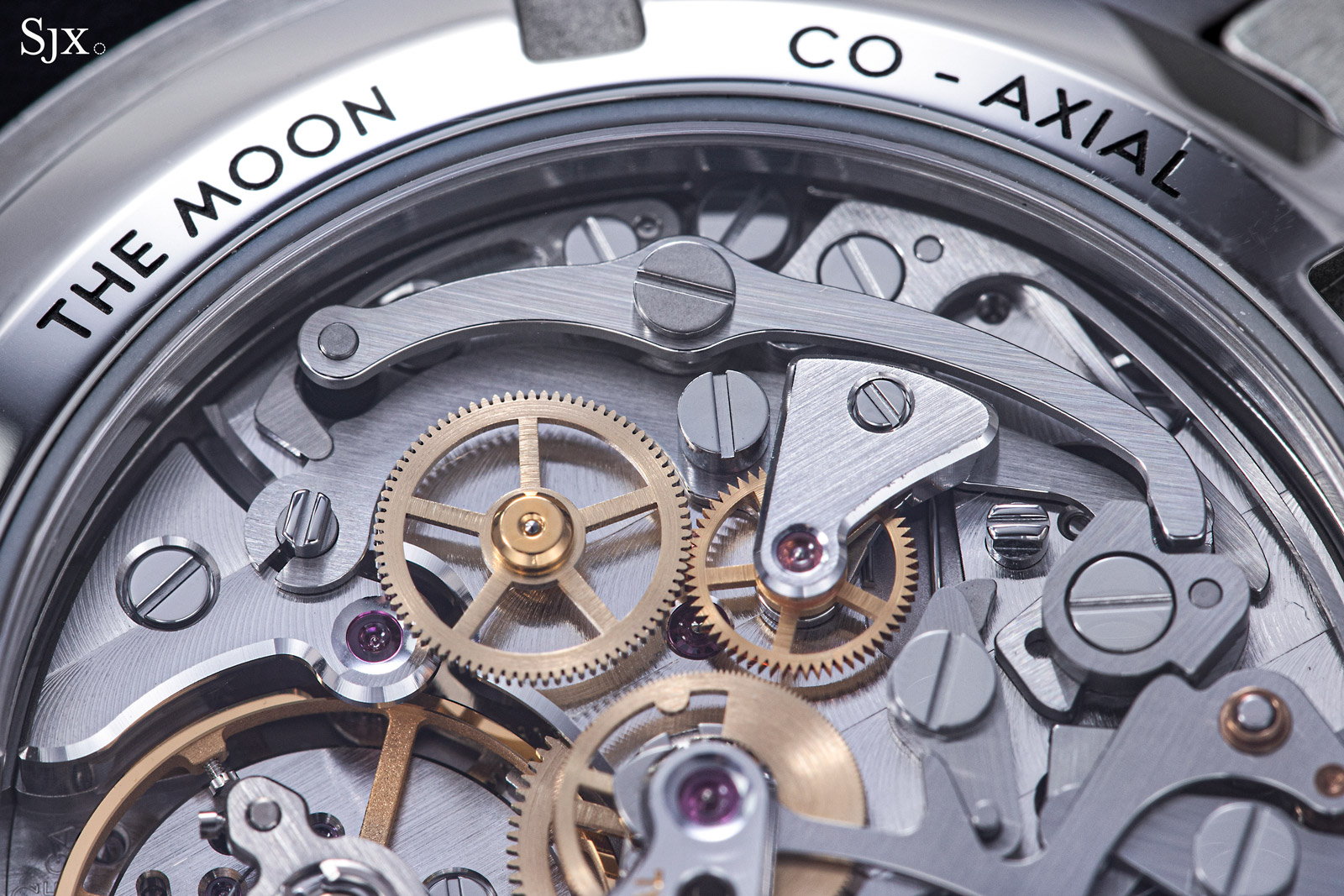
The case back engraving helpfully summaries everything that matters about the watch – “Moon” and “Co-Axial”
The cal. 3861 is exactly that, a technically-upgraded movement that retains the same overall aesthetic. While it looks largely the same, it performs better in almost every respect.
To start with, the cal. 3861 finally incorporates the Co-Axial escapement invented by George Daniels and synonymous with Omega today. The brand famously acquired the rights to the invention from the late English watchmaker – you can discover the history of the relationship here – and then modifying it for mass production, resulting in its proliferation across Omega’s wide portfolio of movements.
The Co-Axial escapement gives Omega an upper hand in terms of branding, but its main practical advantage is often regarded as its “frictionless” operation. This refers to the impulse between the escape wheel and pallet fork – instead of the sliding contact of a conventional escapement, the Co-Axial escapement functions with a tangential impulse, resulting in little to no friction between the two components. Theoretically, that implies the escapement does not require lubrication, though Omega still does so to ensure longevity of the parts.
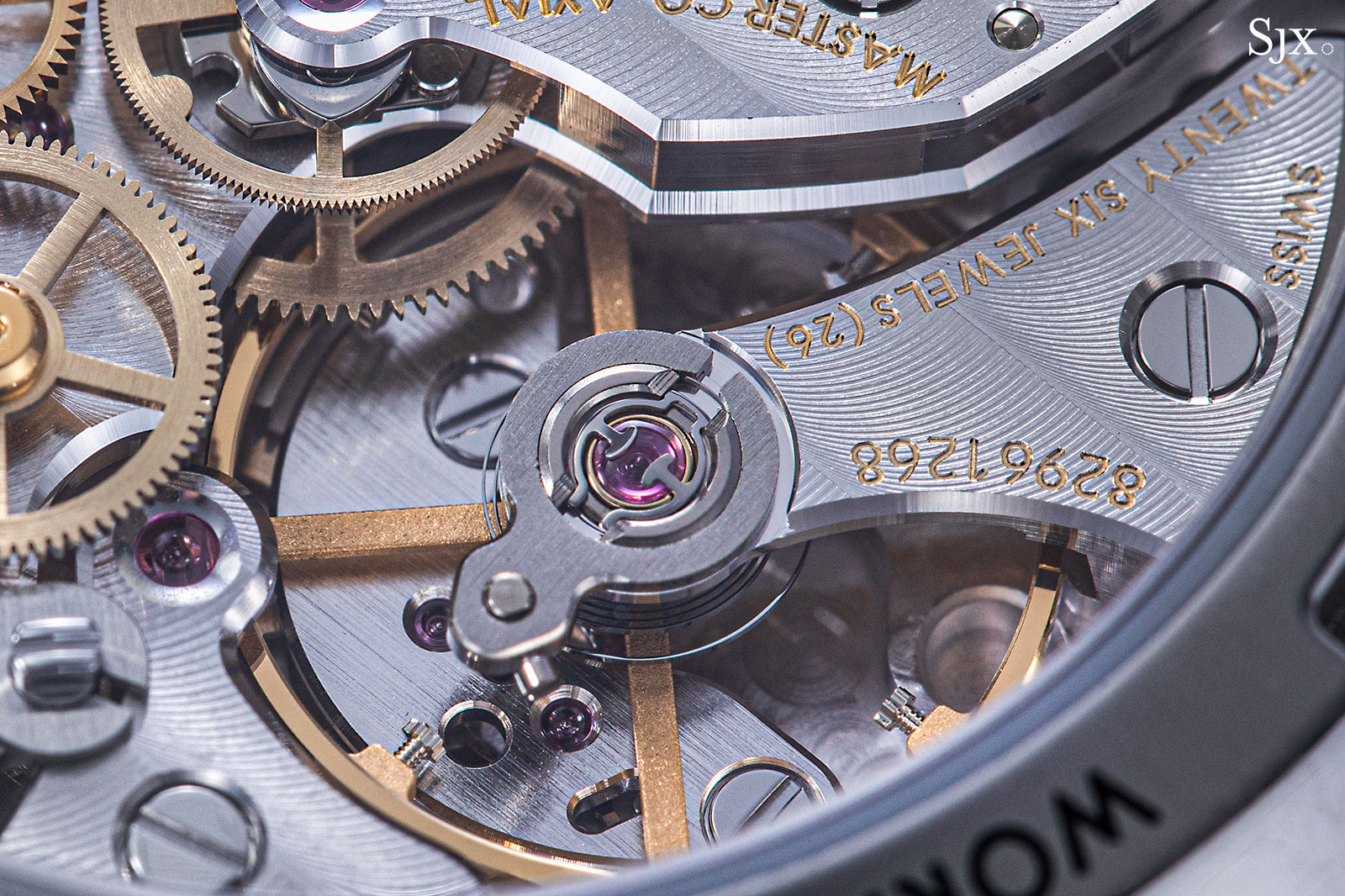
Add to that a free-sprung balance for better isochronism and a silicon hairspring that’s magnetism-resistant, the cal. 3861 will inevitably be a superior timekeeping, all things being equal.
In fact, the silicon hairspring goes along with non-ferrous escapement parts, giving the movement magnetism resistance of 15,000 Gauss – practically insulating it from all magnetism one encounters in everyday life, mostly from personal electronics like smartphones, tablets, and speakers.
As with most higher-end Omega watches, the new Moonwatch is a Master Chronometer – it’s accompanied by a card attesting to this – which means it is tested to tighter tolerances than standard models, namely a maximum deviation of zero to +5 seconds a day.
Alongside the improved accuracy, the movement also receives a hacking seconds – finally – allowing for precise setting of the time, something that was sorely missed in the cal. 1861/1863 of old.
Keeping cam
That brings us to an upgrade that is absent in the new movement. Like its predecessor, the cal. 3861 uses a shuttle and cam mechanism to control the chronograph, a simple system that’s proven to be robust over decades.
The alternative to the cam is the column wheel, which results in a slightly more complex set up that is widely regarded as being more sophisticated and having a crisper pusher feel. Column wheels are practically the norm for high-end chronographs.
As a result, there seems to have been a missed opportunity to “upgrade” the cal. 3861 with a column wheel. That was exactly what was found in the cal. 321 of the earliest-generation Speedmaster. It would have made for a tangibly better movement, while also being yet another vintage-inspired upgrade.
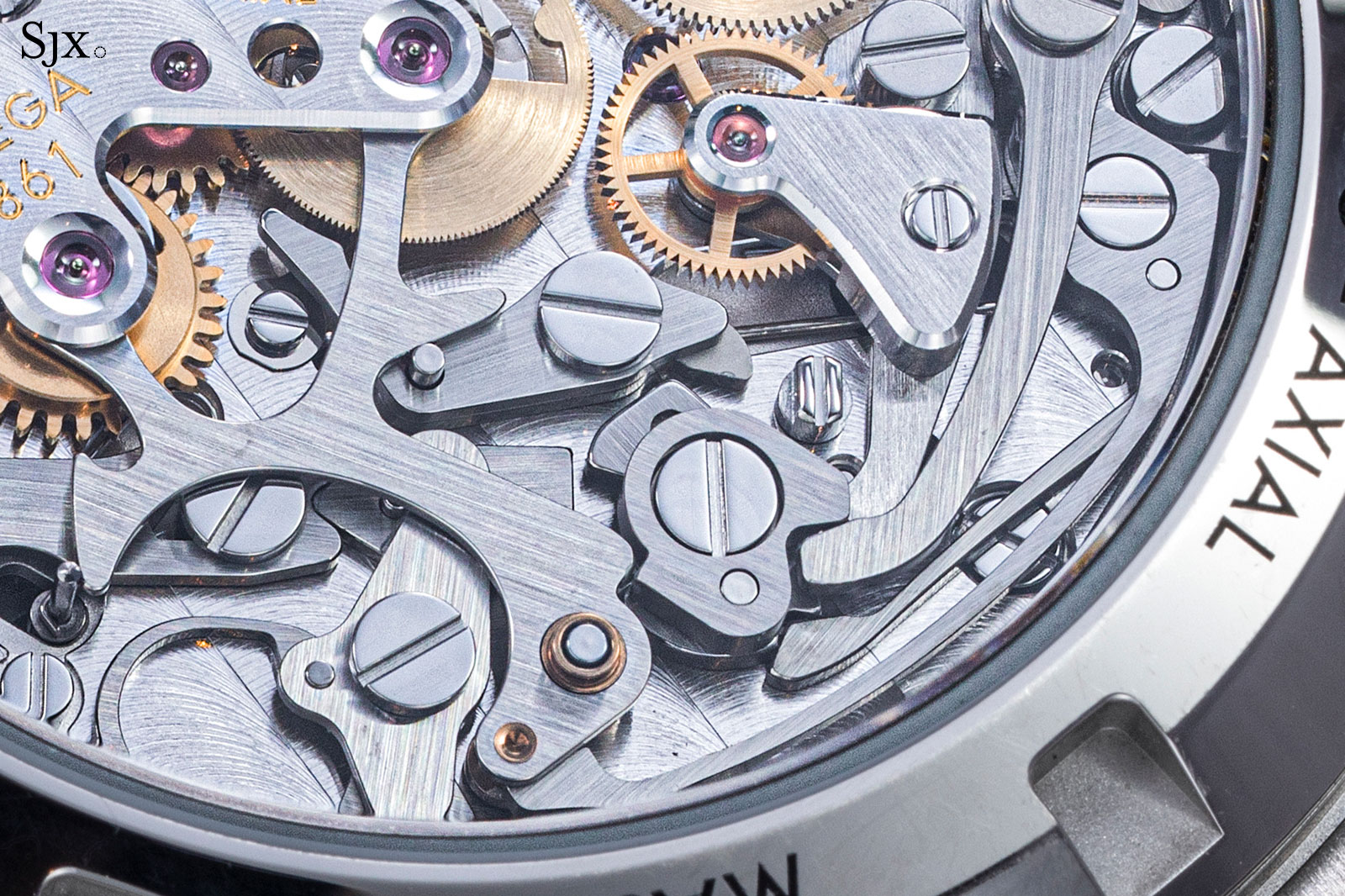
The cam (above centre) coordinates the start, stop, and reset of the chronograph
The decision to retain the cam was clearly a conscious one. And the reasons for that are obvious, including to remain faithful to the cal. 1861/1863 of the outgoing model – it was used in the Moonwatch for some 50 years after all.
Strategically, it also makes sense to preserve the distinction between product tiers. The Speedmaster models equipped with the cal. 321, which does have a column wheel, cost substantially more. In fact, the Speedmaster Moonwatch 321 “Ed White” costs double the Moonwatch with the cal. 3861.
The intriguing view
In its price segment of US$7,000-ish, the Moonwatch with the cal. 3861 stands apart from its competitors simply because of its movement, which is hand-wind with a lateral-clutch chronograph. Majority of watches in this arena are automatic, and those that are hand-wind will inevitably be powered by the hand-wind version of the automatic Valjoux 7750 (or derivations thereof).
The cal. 3861 has a decidedly more traditional aesthetic, and not having a rotor provides a full view of the chronograph mechanism. That matters because the view in the new Moonwatch is decidedly better than that in its predecessor.
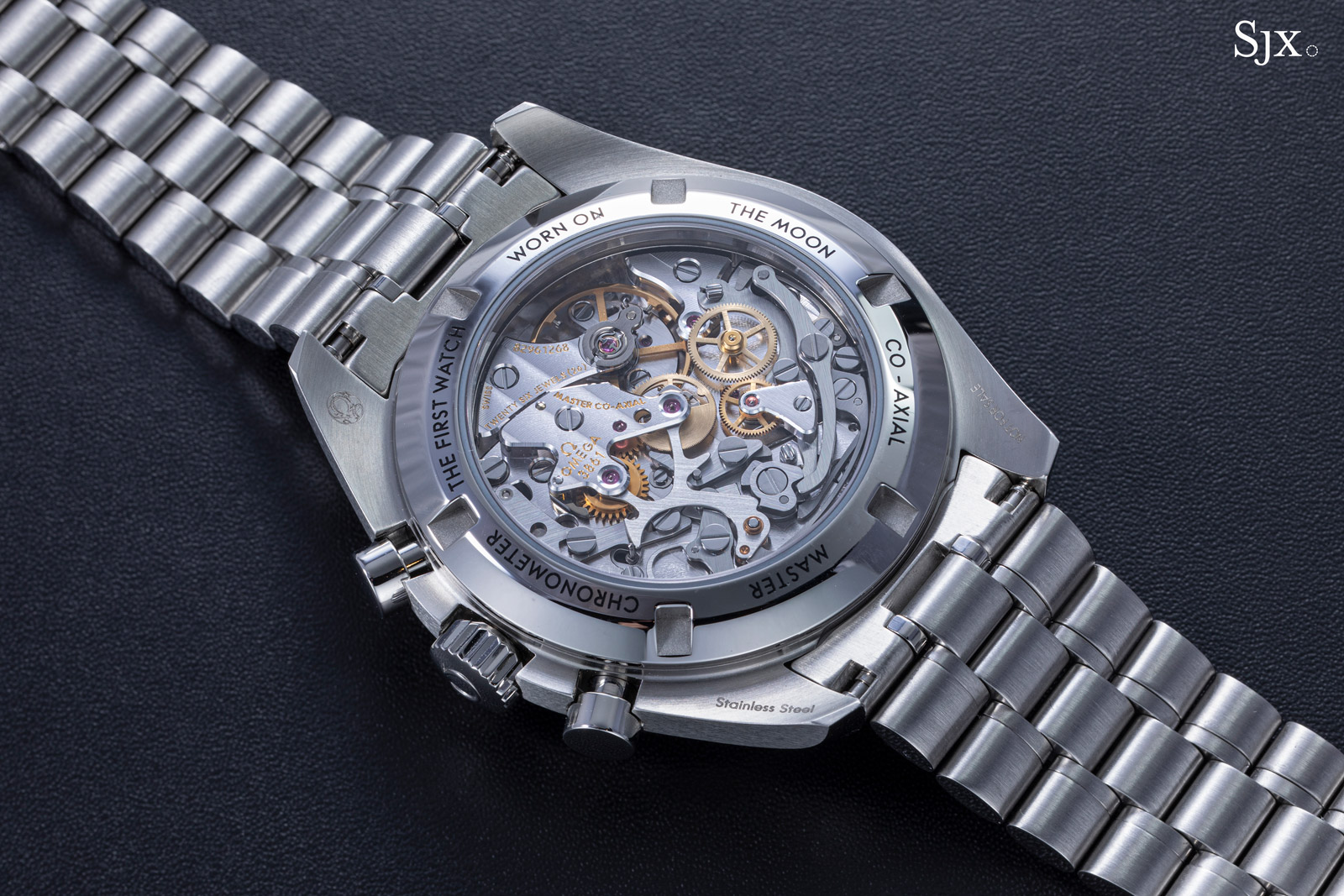
Not only are the technical bits of the cal. 3861 improved, but its finishing is superior, at least in terms of consistency. In fact, it’s worth remembering that the previous generation of Moonwatch was equipped with two versions the same movement, the sapphire-back version with the decorated cal. 1863, and the solid-back version with the cal. 1861.
In contrast, the new Moonwatch relies on the cal. 3861 across all its versions, because the cal. 3861 is good enough.
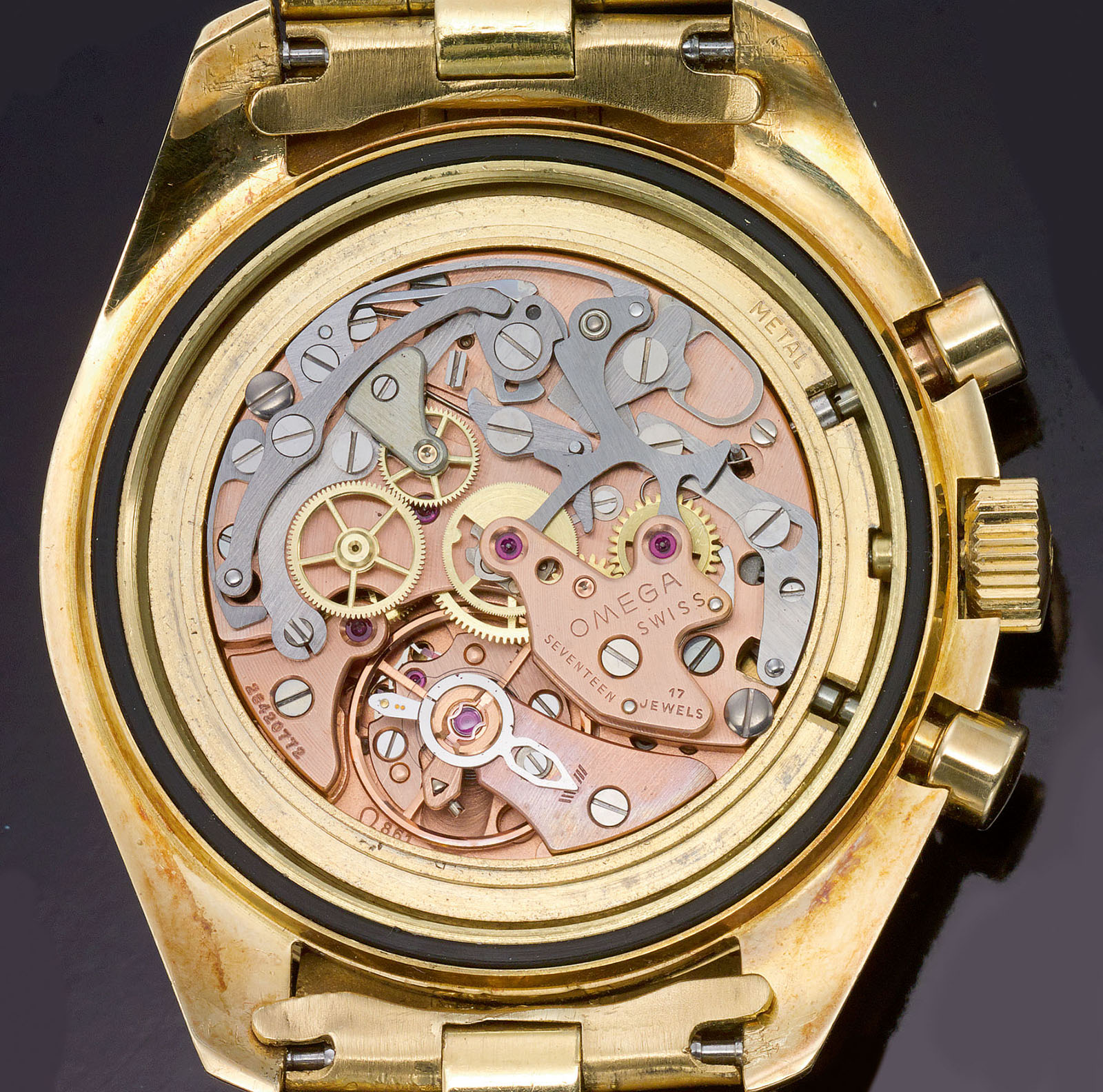
And for comparison, a cal. 861 from a ref. 145.022-69. Photo – Sotheby’s
The most notable difference between the decoration of the cal. 3861 and cal. 1863 is the bevelling of the parts, or anglage. To start with, the cal. 1863 has polished, rounded anglage, a rare feature in a watch of its price that brings with it the charm of hand-finished decoration.
In contrast, the cal. 3861 has stark, diamond-cut bevelling that produces a flat, 45-degree slope. A modern take on traditional finishing, this style of bevelling is increasingly common and found in a diverse array of movements from the likes of Audemars Piguet, Ulysse Nardin, Grand Seiko, and Citizen.
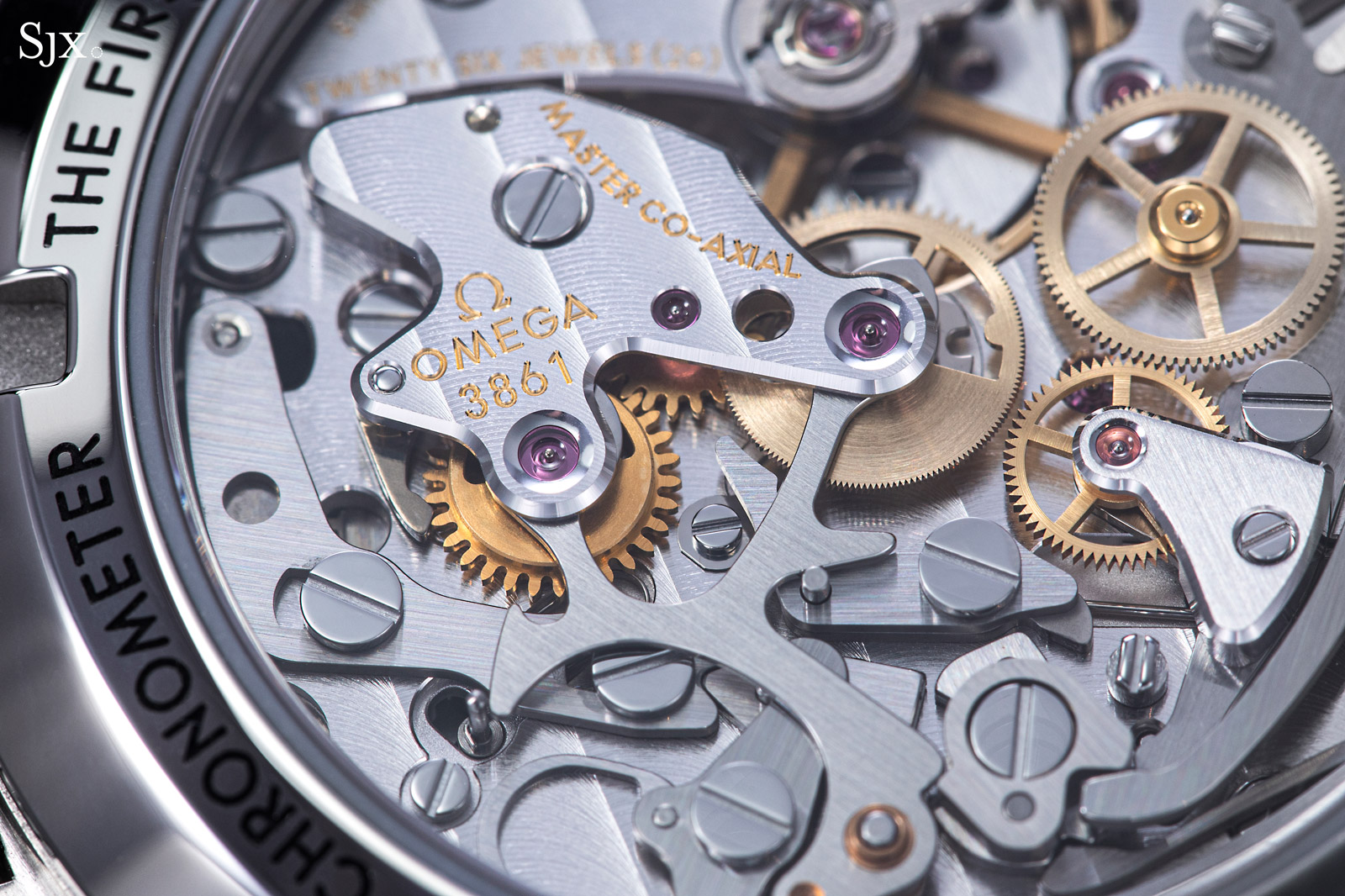
However, despite being purely machine-applied, the anglage is well done and attractive. Strikingly clean in their execution, the bevels are wide, with well-defined boundaries and highly reflective surfaces that easily catches the light. However, the vertical striations that are the telltale sign of milled anglage are visible on all of the bevelled edges.
That said, the narrow bevels on the steel chronograph levers appear to be shiny and rounded, indicating they were perhaps finished off by hand.
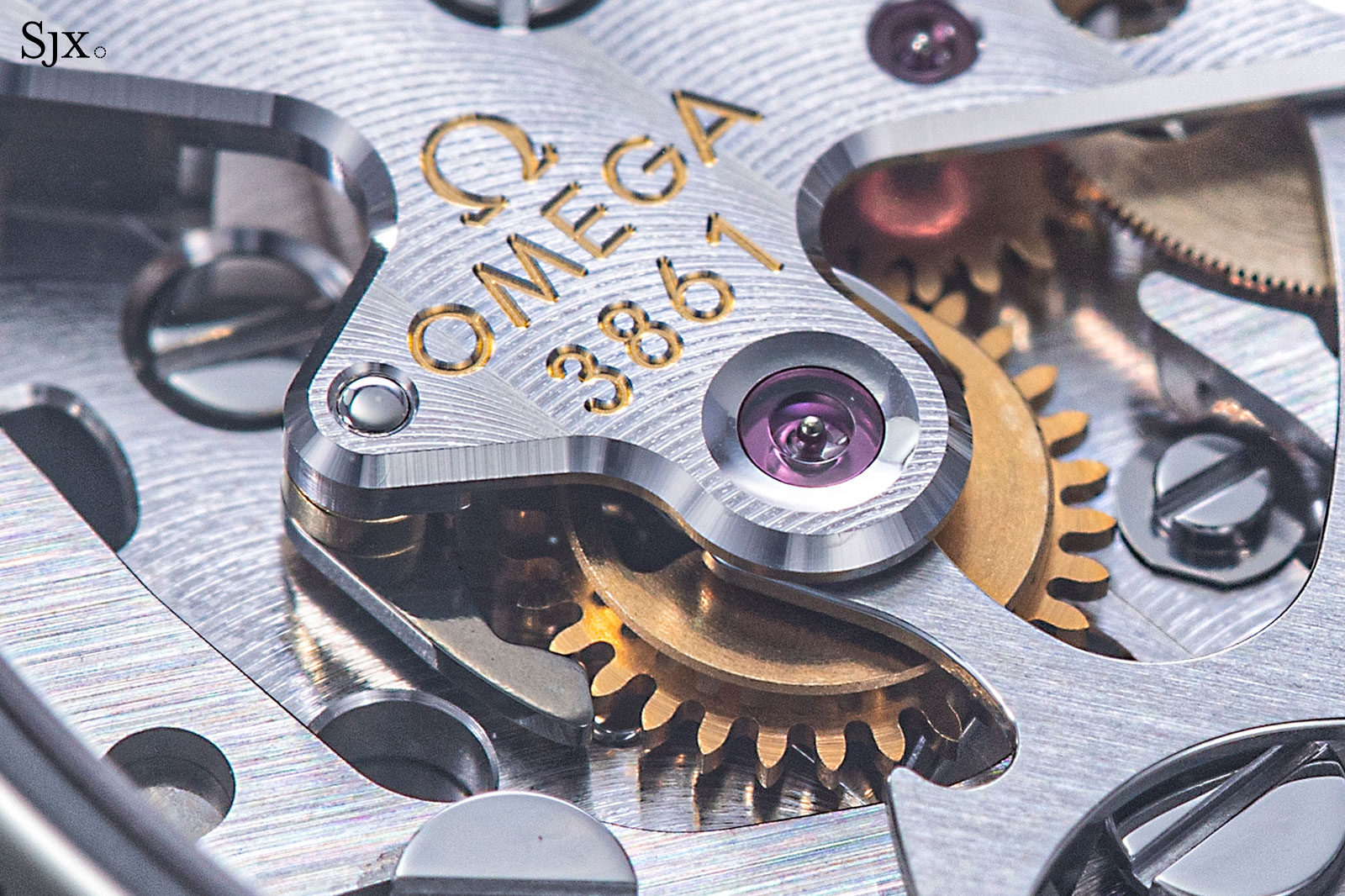
The bevels on the bridges are wide and neat, with well-defined borders and the telltale milling marks
One notable improvement on the cal. 3861 are the countersinks for jewels and screws on the bridges. Now bowl-shaped and highly polished, the countersinks are markedly better than their stamped counterparts found on the cal. 1861/1863.
The refined countersinks result in a more coherent appearance for the movement, since both the bevels and countersinks are now finished to the same standard.
Also worth mentioning is the striping, or Cotes de Geneve. When done by machine, striping is often applied too heavily – resulting in stripes that appear engraved – causing an uneven surface that is especially noticeable where the striping meets the bevelled edge. In the cal. 3861, however, the striping is impressively uniform and level on all bridges.
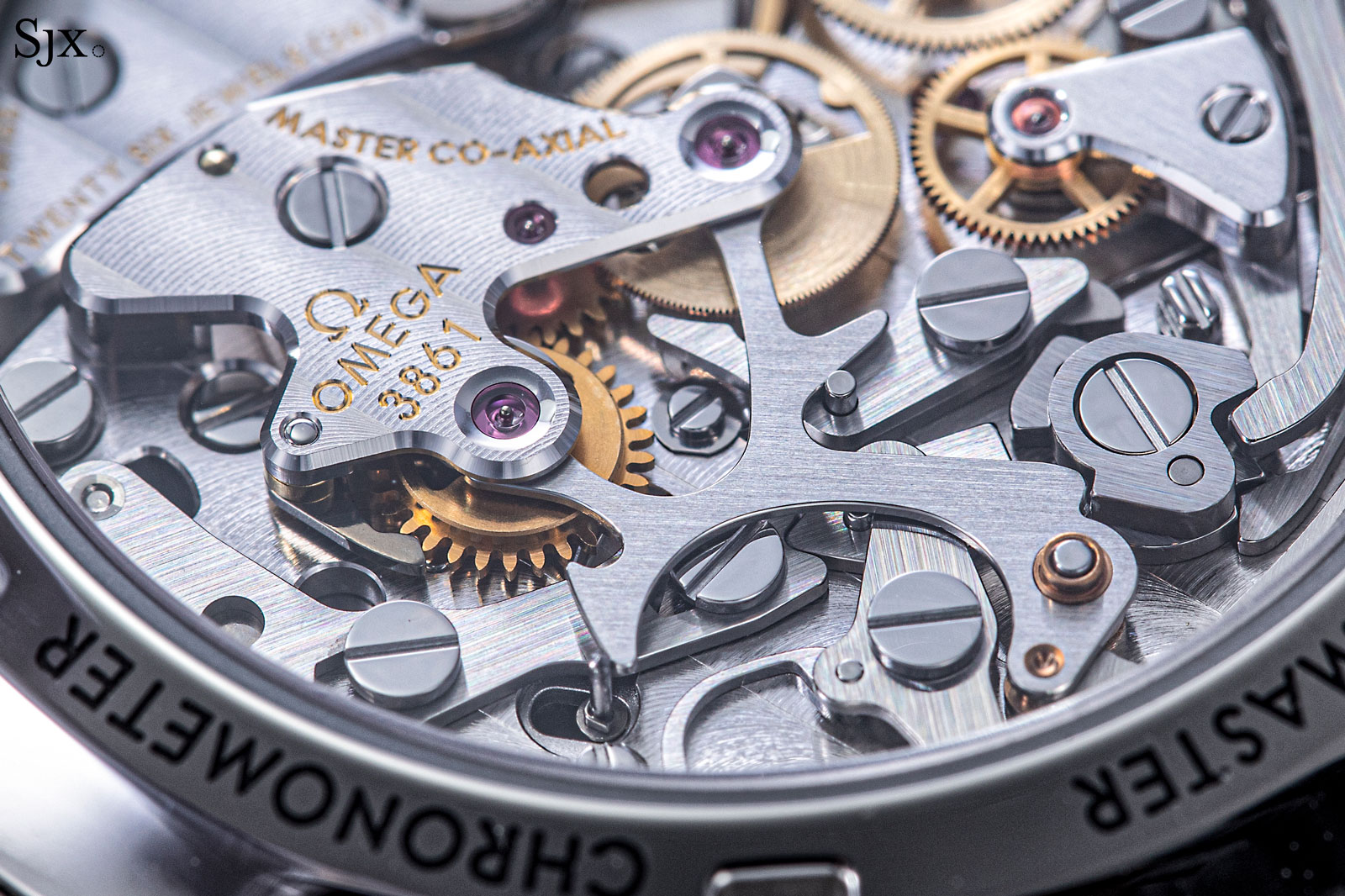
The countersinks are precisely ringed by the machined bevels, resulting in a tidy, consistent appearance
Last but not least is the gilded, engraved lettering is more neatly applied, both in terms of typography with better kerning, as well as execution with reduced burring within the engraving.
The text placement on the bridges is also more tasteful. Take for example the “Master Co-Axial” label on the chronograph bridge, which is curved to echo the outline of the balance wheel underneath.
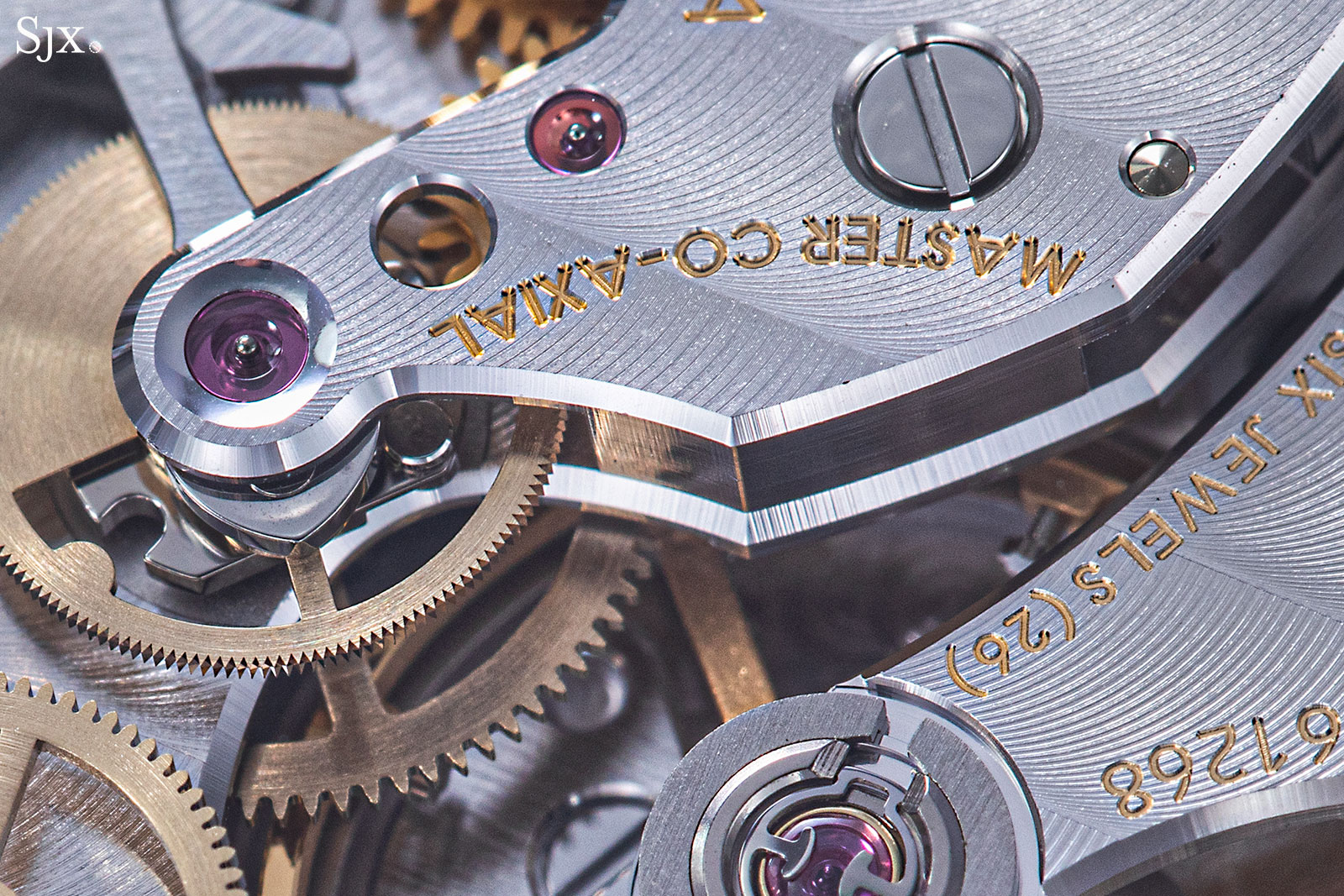
The gilded lettering on the bridges are clean and sharp
The rest of the movement is finished similarly to the cal. 1863 – which is to say industrial but workmanlike in style.
The steel chronograph levers are brushed and gently bevelled, while the screws are tumble polished and brass wheels are circularly grained. And the baseplate is finished with perlage, as is the industry norm.
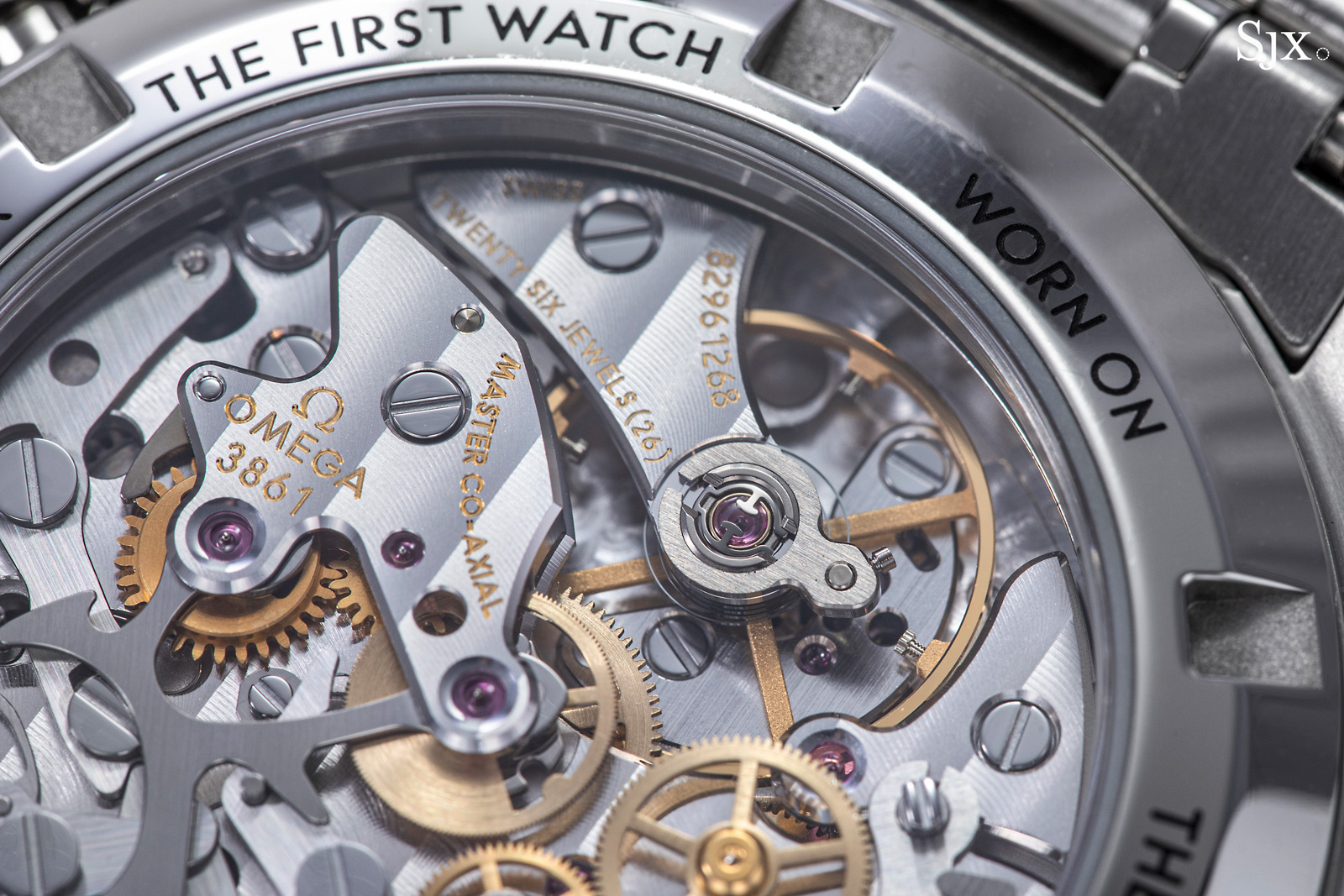
Concluding thoughts
The Speedmaster Moonwatch is a difficult watch not to like. It has all the qualities expected of a “good” watch, such as a pleasing, original design, matched with a better-than-average movement. And of course the Moon-landing history catapults the watch into the ranks of horological greats.
And now the Moonwatch has just gotten better. The dial is more nuanced in style, while the revamped movement is tangibly superior, making the Moonwatch hard to beat at its price. While its value proposition has been reduced as compared to its predecessor, the new Moonwatch remains one of the best deals in the manual-wind chronograph category.
Omega continues to craft understated, solid watches, at least within the limitations of commercial realities. Admittedly the Moonwatch isn’t perfect, but it is a delightful combination of historical inspiration, classical proportion, and timekeeping advancement.
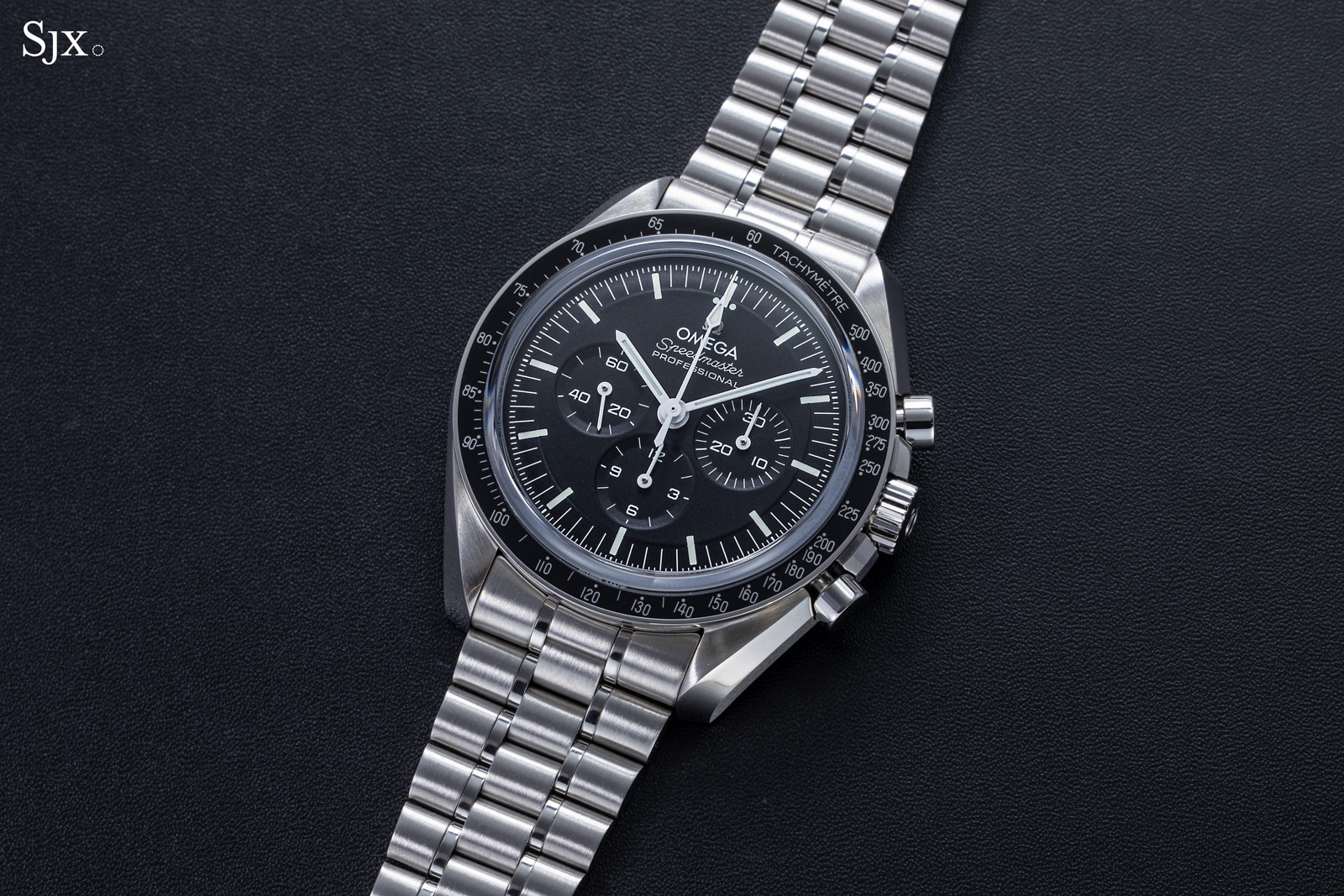
Key facts and price
Omega Speedmaster Moonwatch Professional Co-Axial Master Chronometer Chronograph 42 mm
Ref. 310.30.42.50.01.001 (steel, sapphire, bracelet)
Ref. 310.32.42.50.01.002 (steel, sapphire, strap)
Ref. 310.30.42.50.01.001 (steel, Hesalite, bracelet)
Ref. 310.32.42.50.01.001 (steel, Hesalite, strap)
Ref. 310.60.42.50.02.001 (Canopus gold, bracelet)
Ref. 310.63.42.50.02.001 (Canopus gold, strap)
Ref. 310.60.42.50.01.001 (Sedna gold, bracelet)
Ref. 310.63.42.50.01.001 (Sedna gold, strap)
Diameter: 42 mm
Height: 13.58 mm (Hesalite), and 13.18 mm (sapphire)
Material: Steel or 18k gold
Crystal: Sapphire (option of Hesalite for steel model)
Water resistance: 50 m
Movement: Cal. 3861
Functions: Hours, minutes, seconds, and chronograph
Additional features: Co-Axial escapement, silicon hairspring, and resistant to magnetism of up to 15,000 Gauss
Winding: Hand-wound
Frequency: 21,600 beats per hour (3 Hz)
Power reserve: 50 hours
Strap: Matching metal bracelet, or strap in nylon or leather
Availability: Already at Omega retailers and boutiques, with gold models only at boutiques
Price:
Steel, sapphire, bracelet – US$7,150; or S$10,450
Steel, sapphire, strap – US$6,800; or S$10,000
Steel, Hesalite, bracelet – US$6,300; or S$9,200
Steel, Hesalite, strap – US$5,950; or S$8,700
Canopus gold, bracelet – US$45,300; or S$66,350
Canopus gold, strap – US$30,400; or S$44,500
Sedna gold, bracelet – US$34,800; or S$51,000
Sedna gold, strap – US$24,600; or S$36,100
For more, visit Omegawatches.com.
Back to top.

